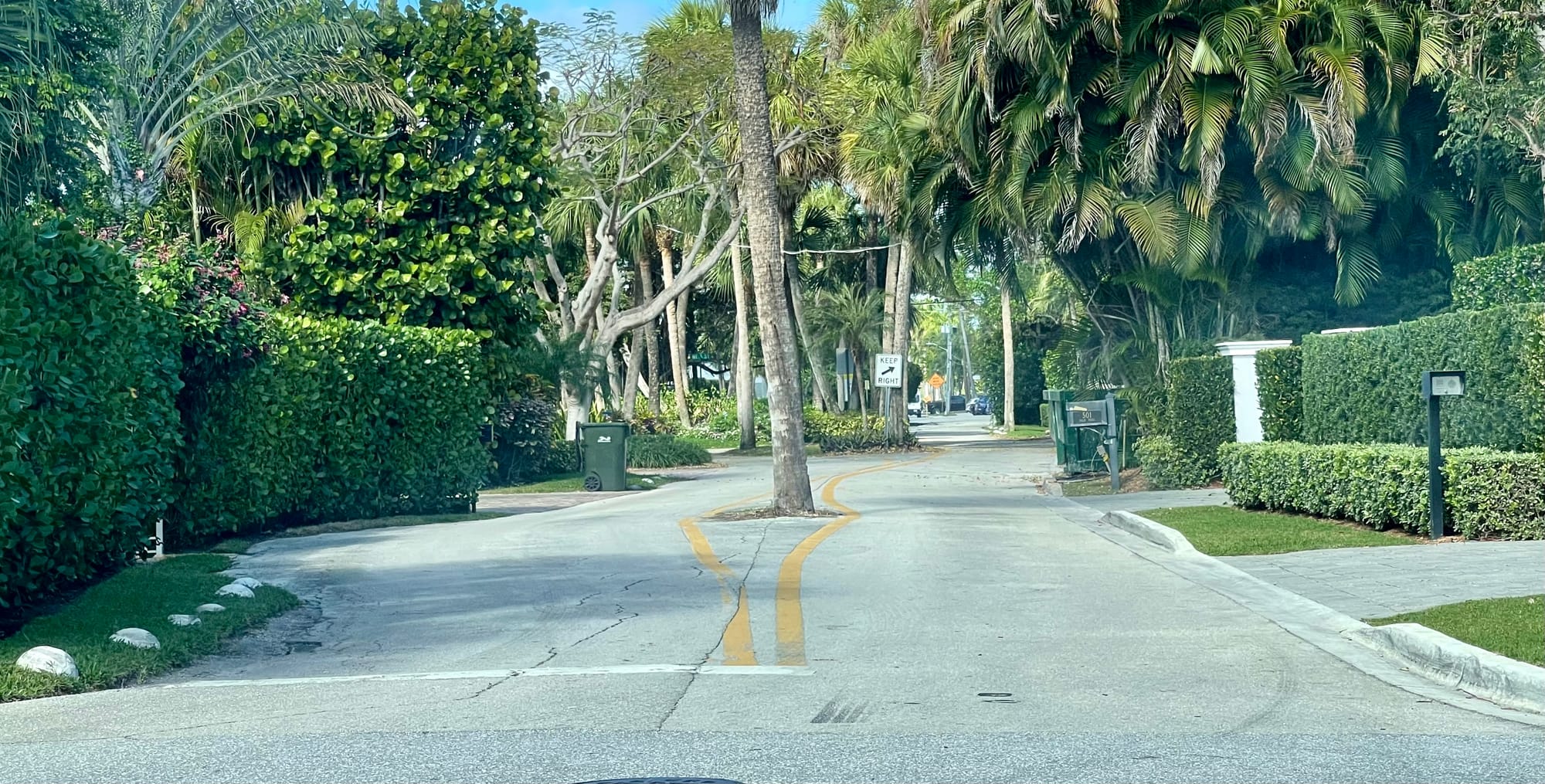needs Federal and Atlantic
From streets with porches on every house encouraging connection to streets defined by garages encouraging driving...from a culture that was about community to a car culture creating isolation and loneliness...
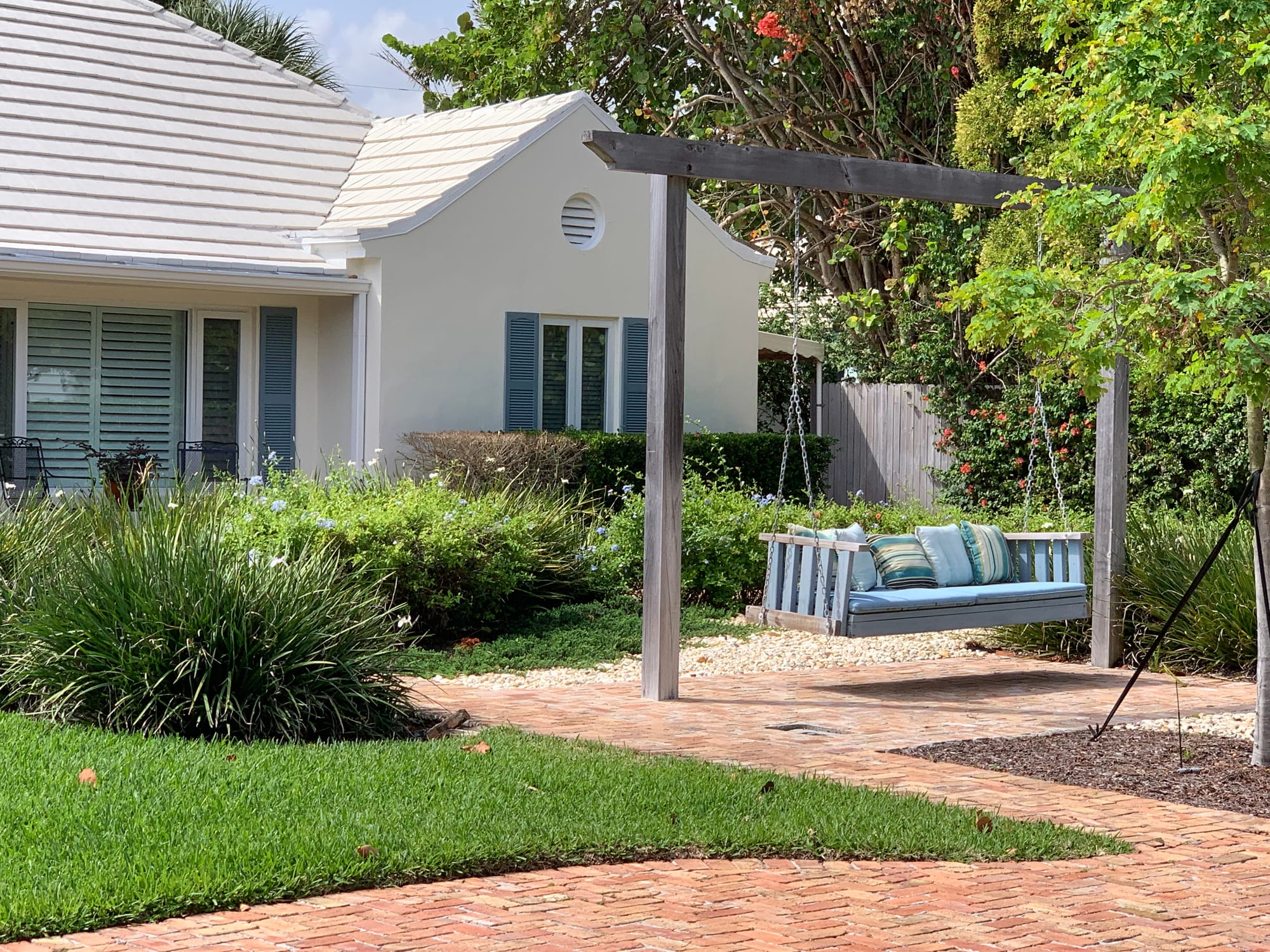
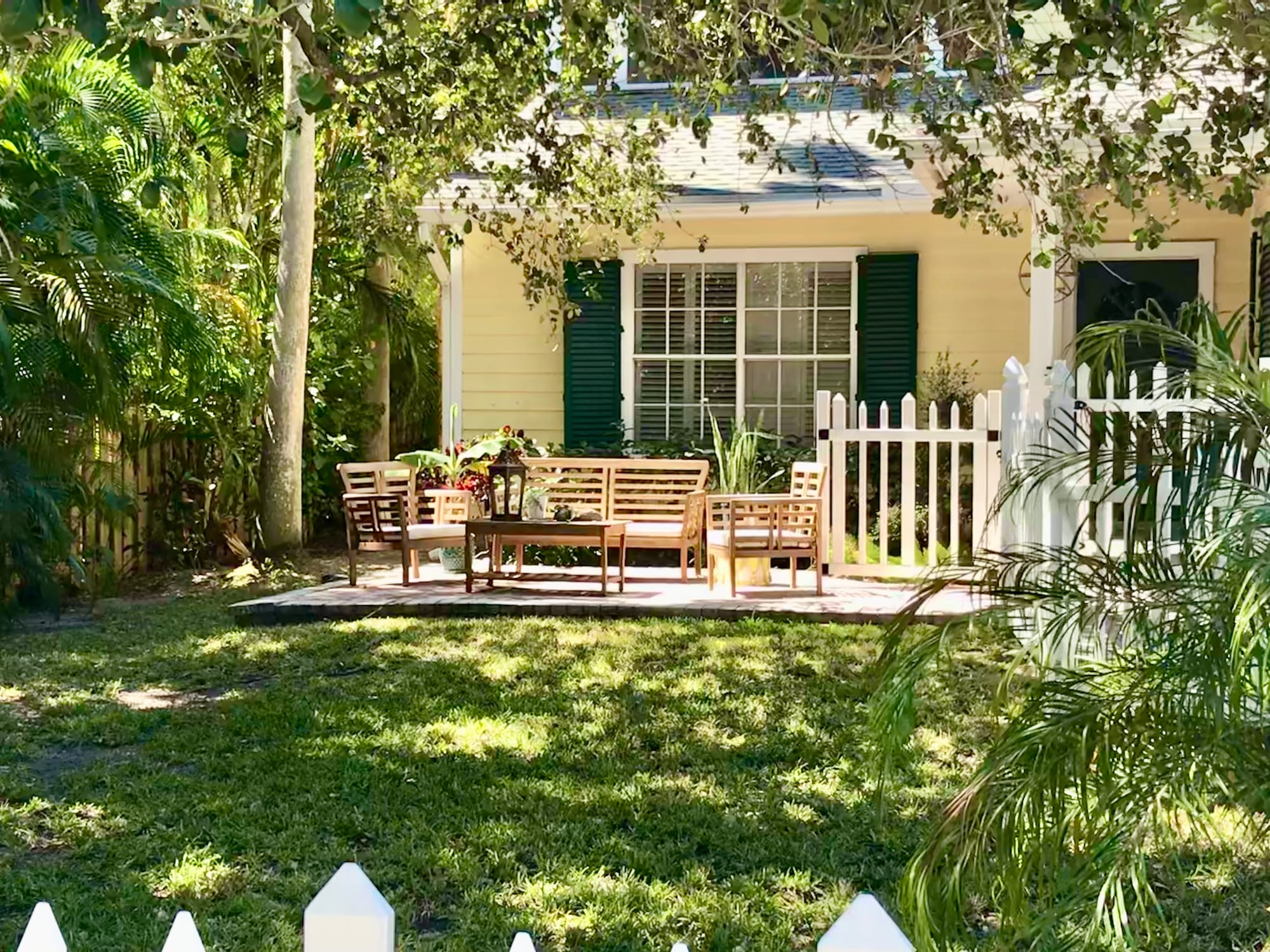
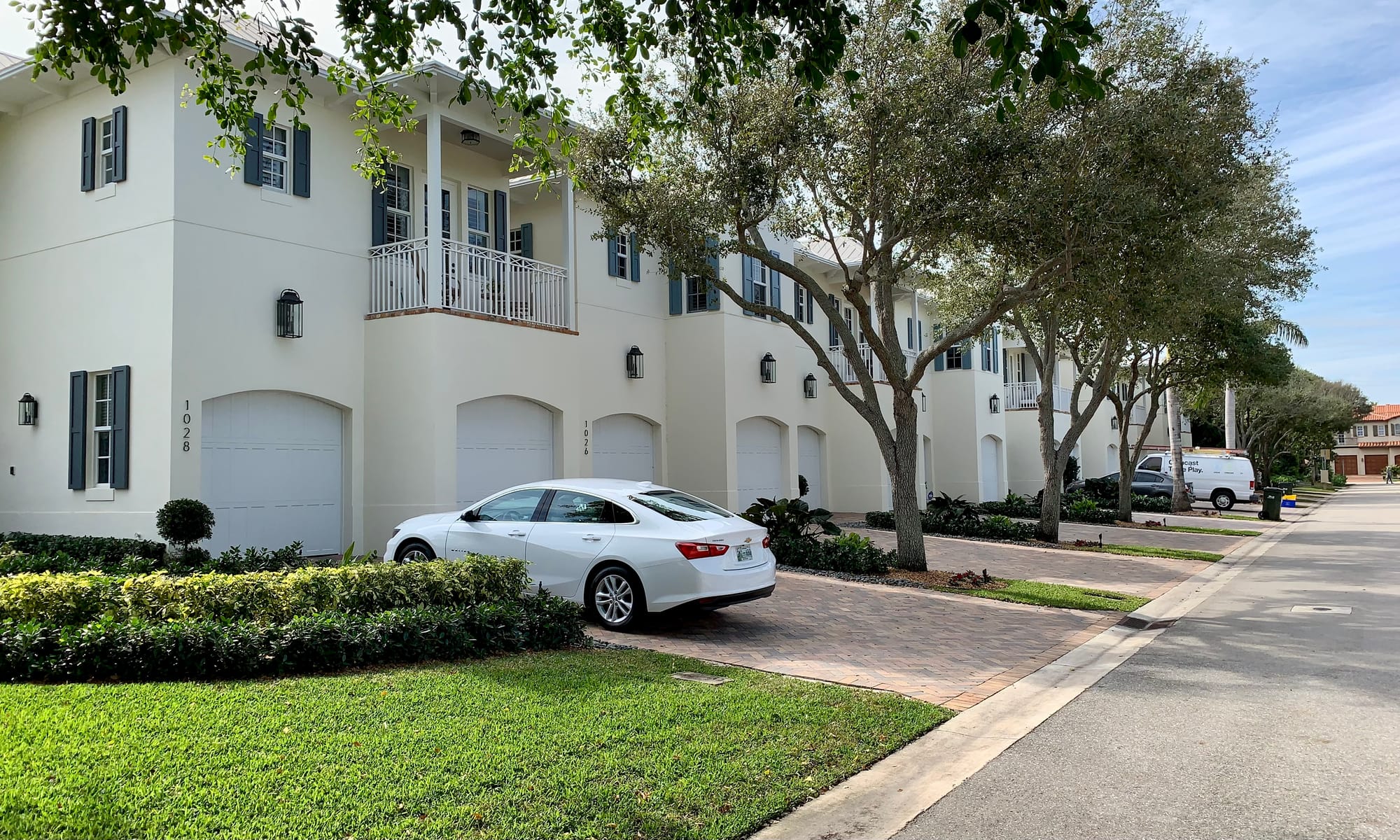
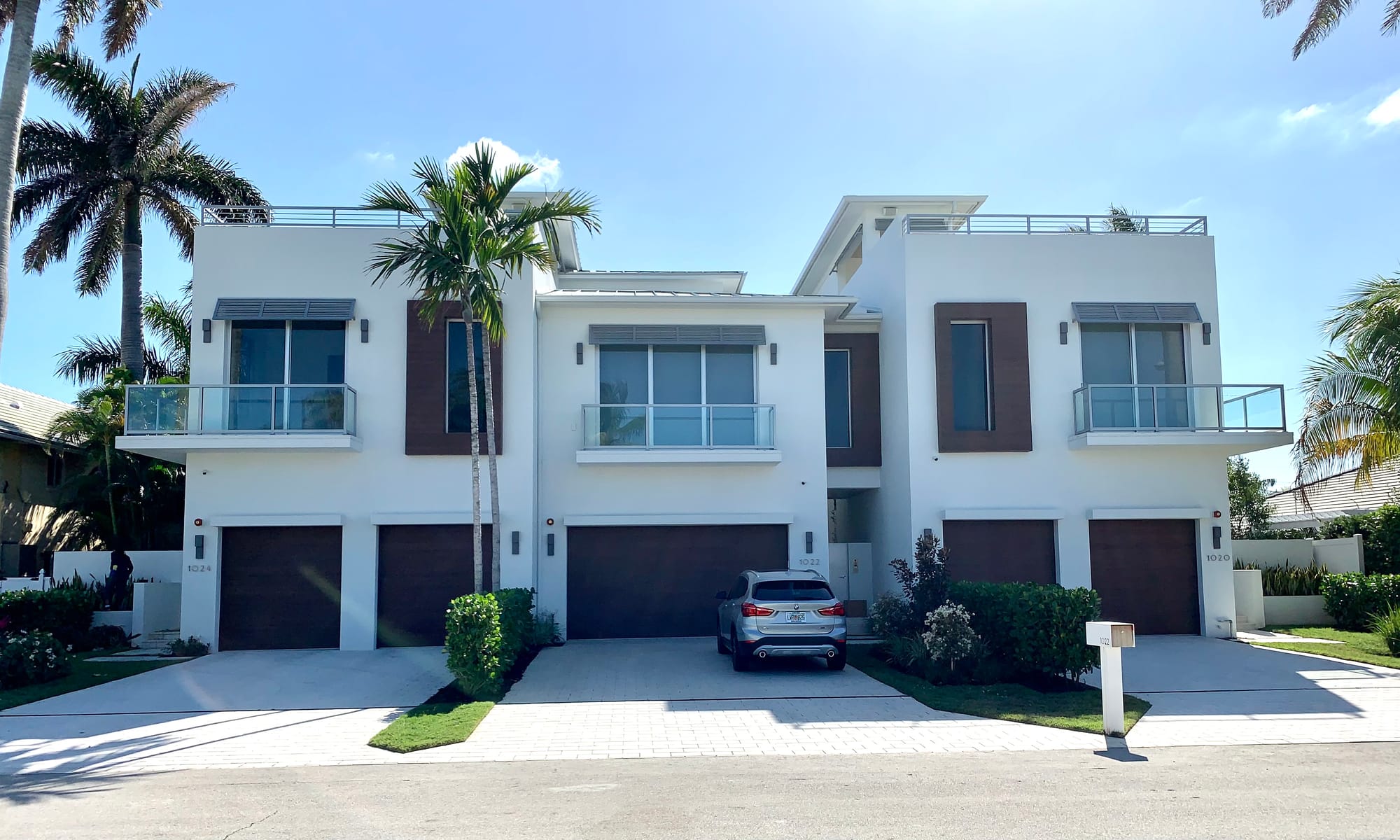
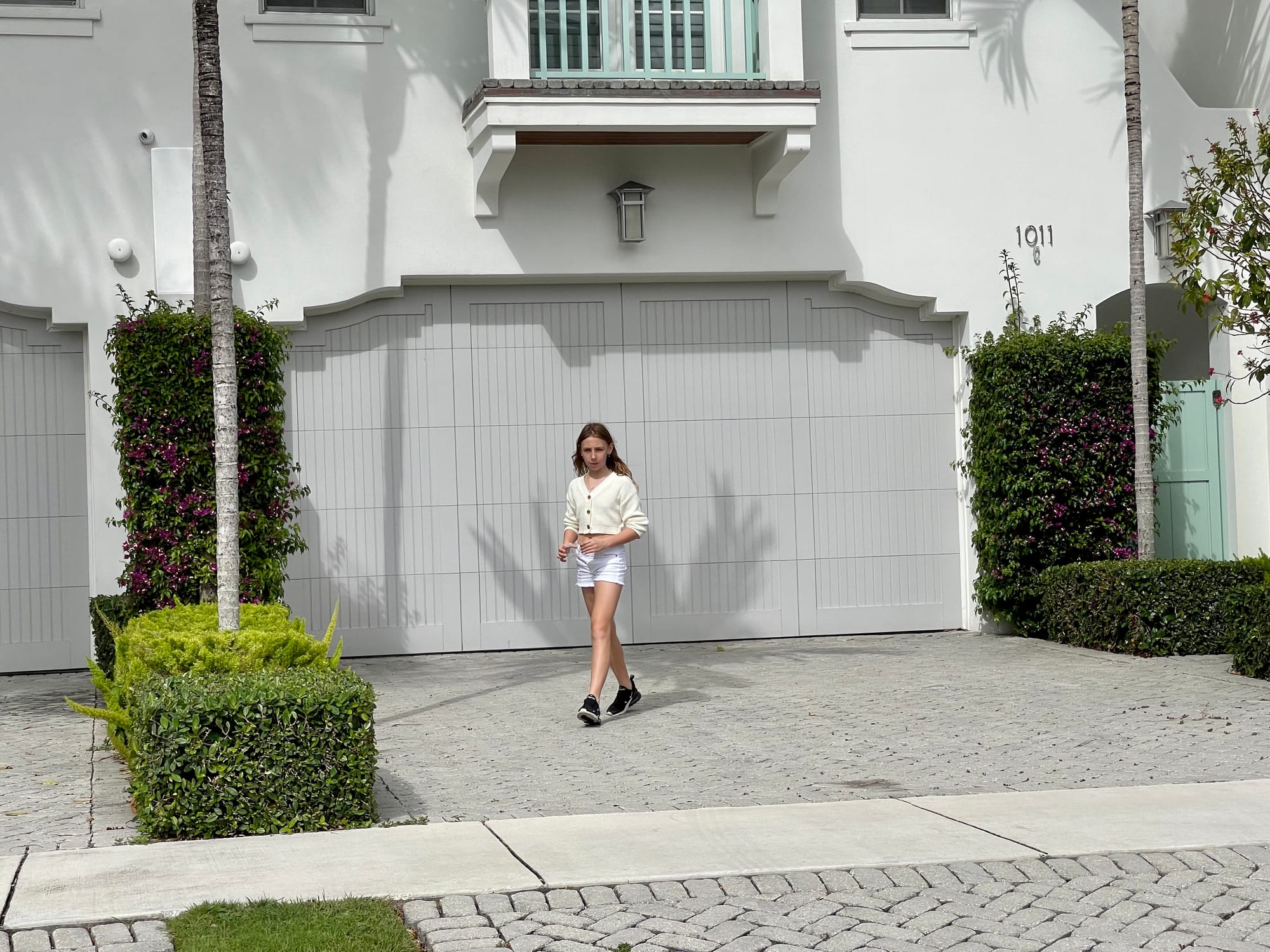
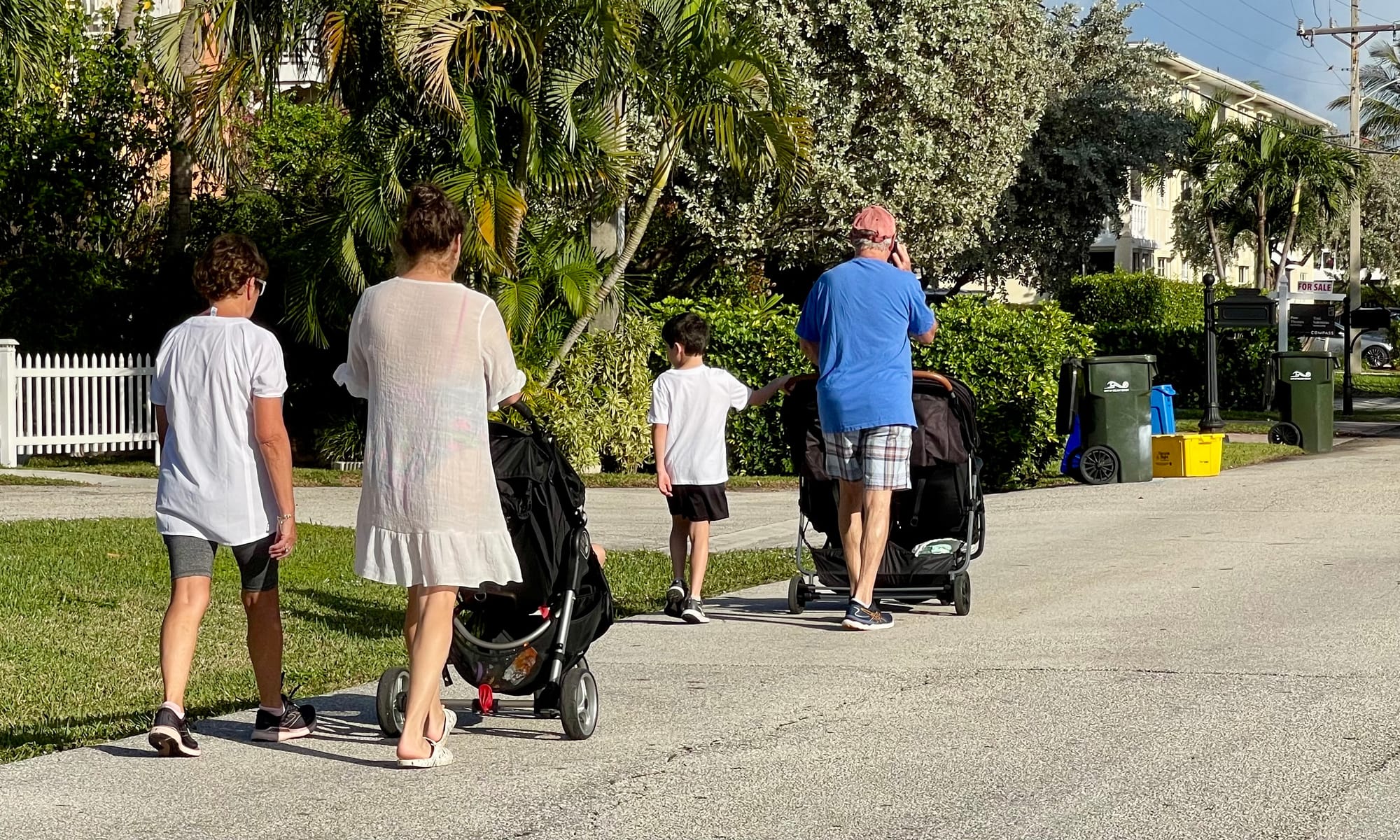
Historic streets in parts of Delray are some of the best we have seen anywhere
The narrow residential streets in Delray's historic neighborhoods are what we and many of our neighbors have always liked most about the city. These streets are wonderful for walking, biking and playing on. We have biked on most of these streets and we feel like we are in heaven when we do so because of how peaceful and beautiful they are.
Drivers practically "walk" their car through these neighborhoods because they are shared with all kinds of people, urging them to drive carefully. Recently, we were on one such street in a car and it was easy to stop and talk to people when we had a question, almost like we did when riding a bike. It felt like a truly shared space where everyone was welcome.
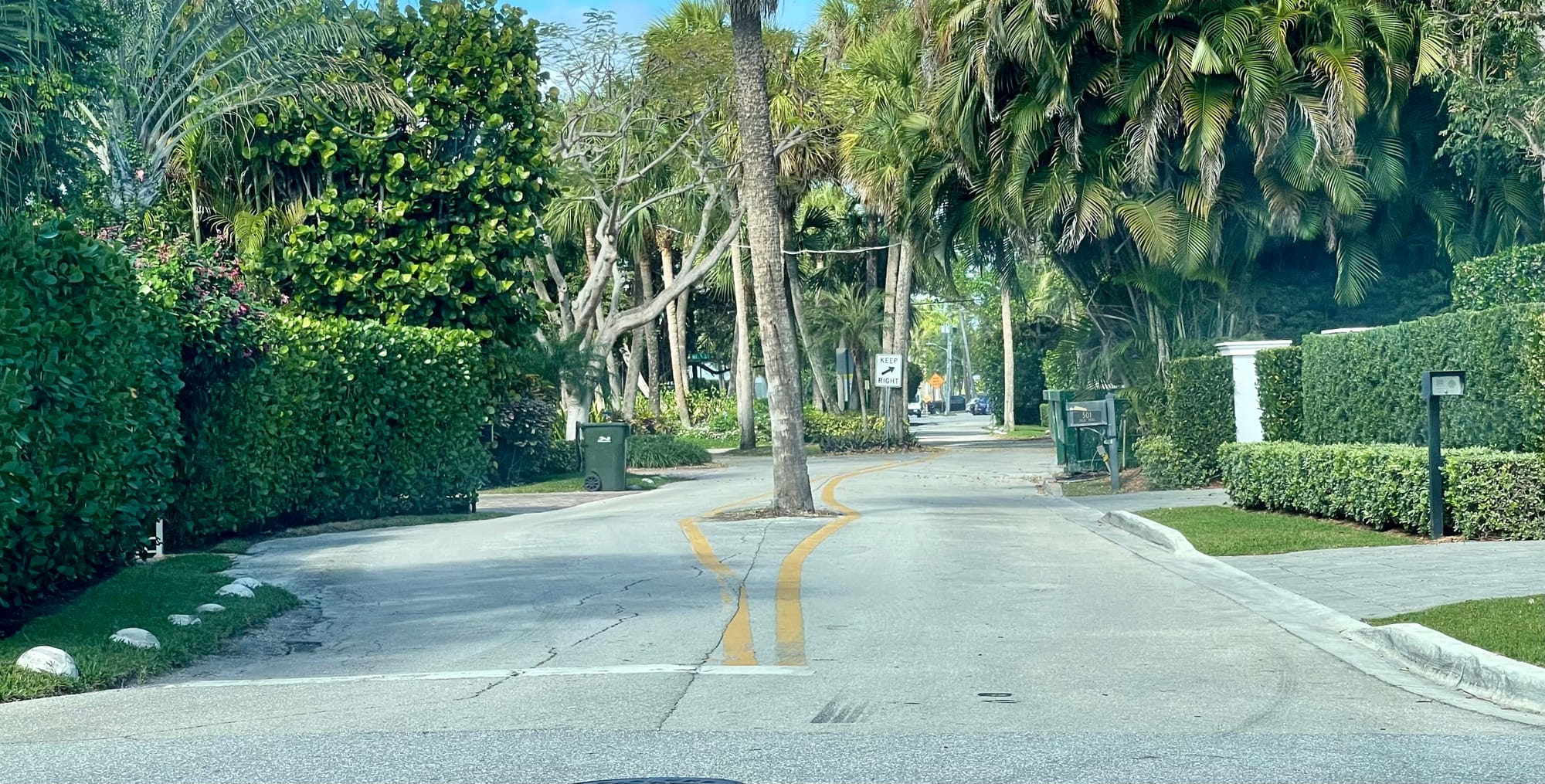
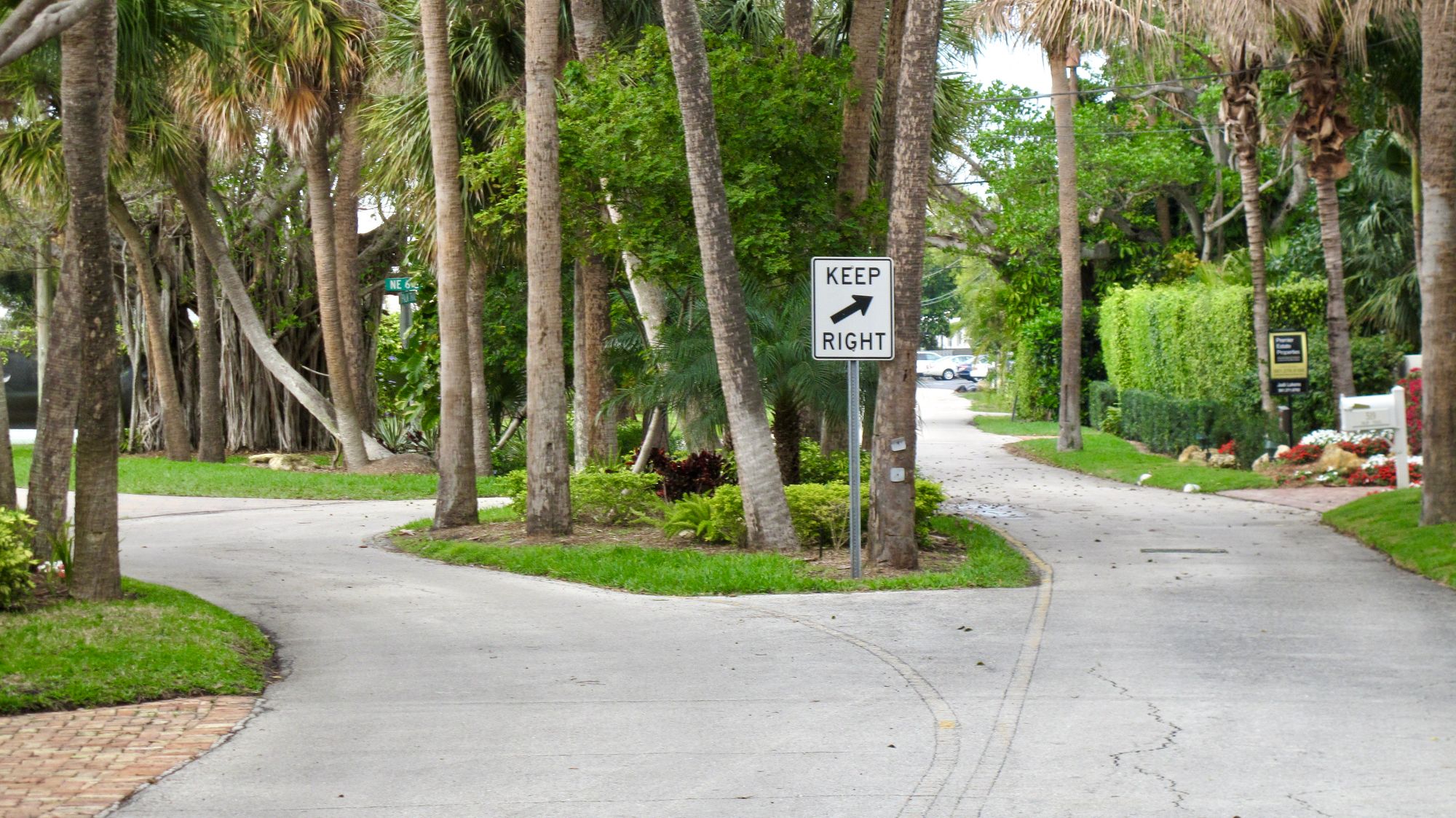
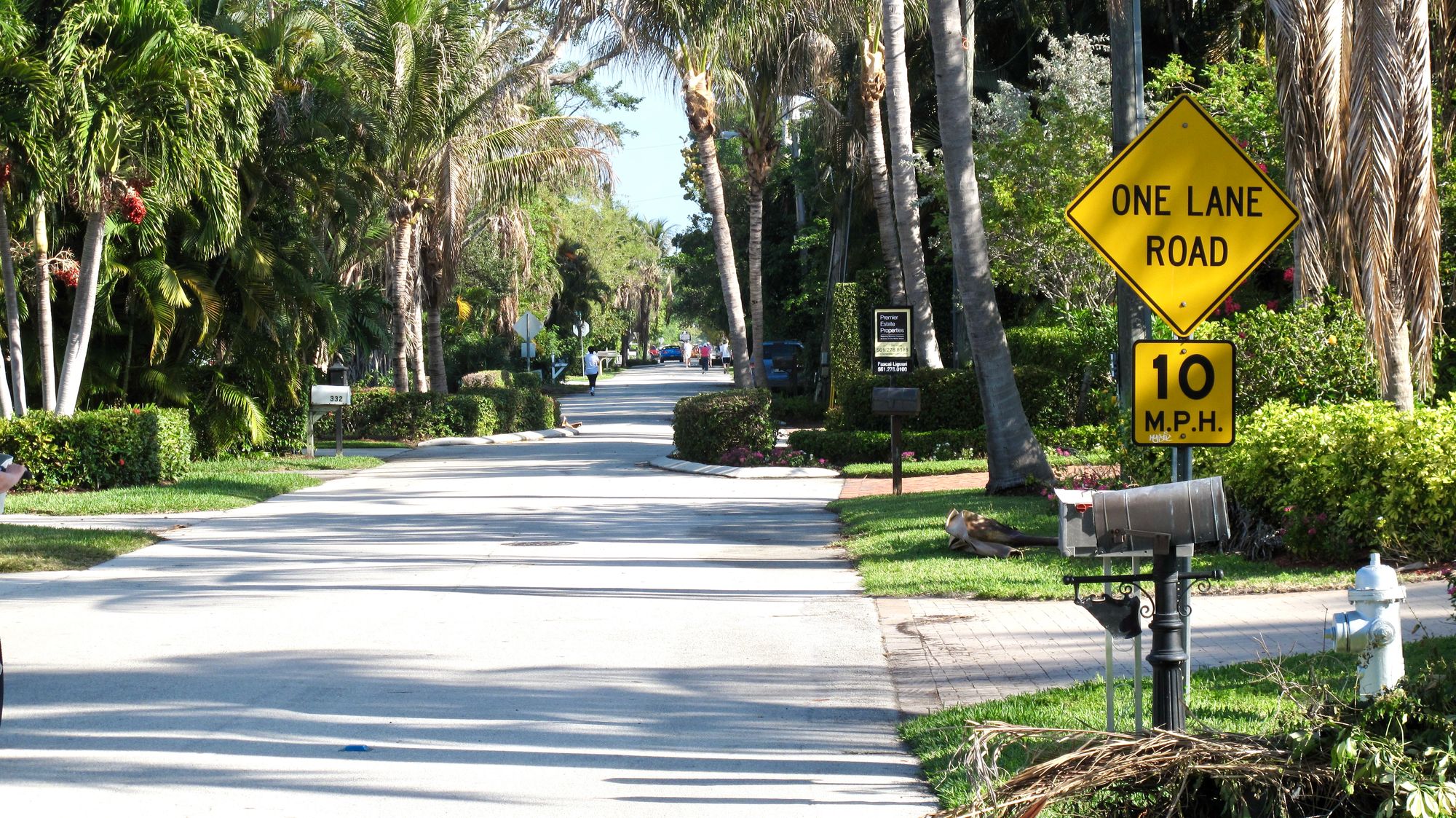
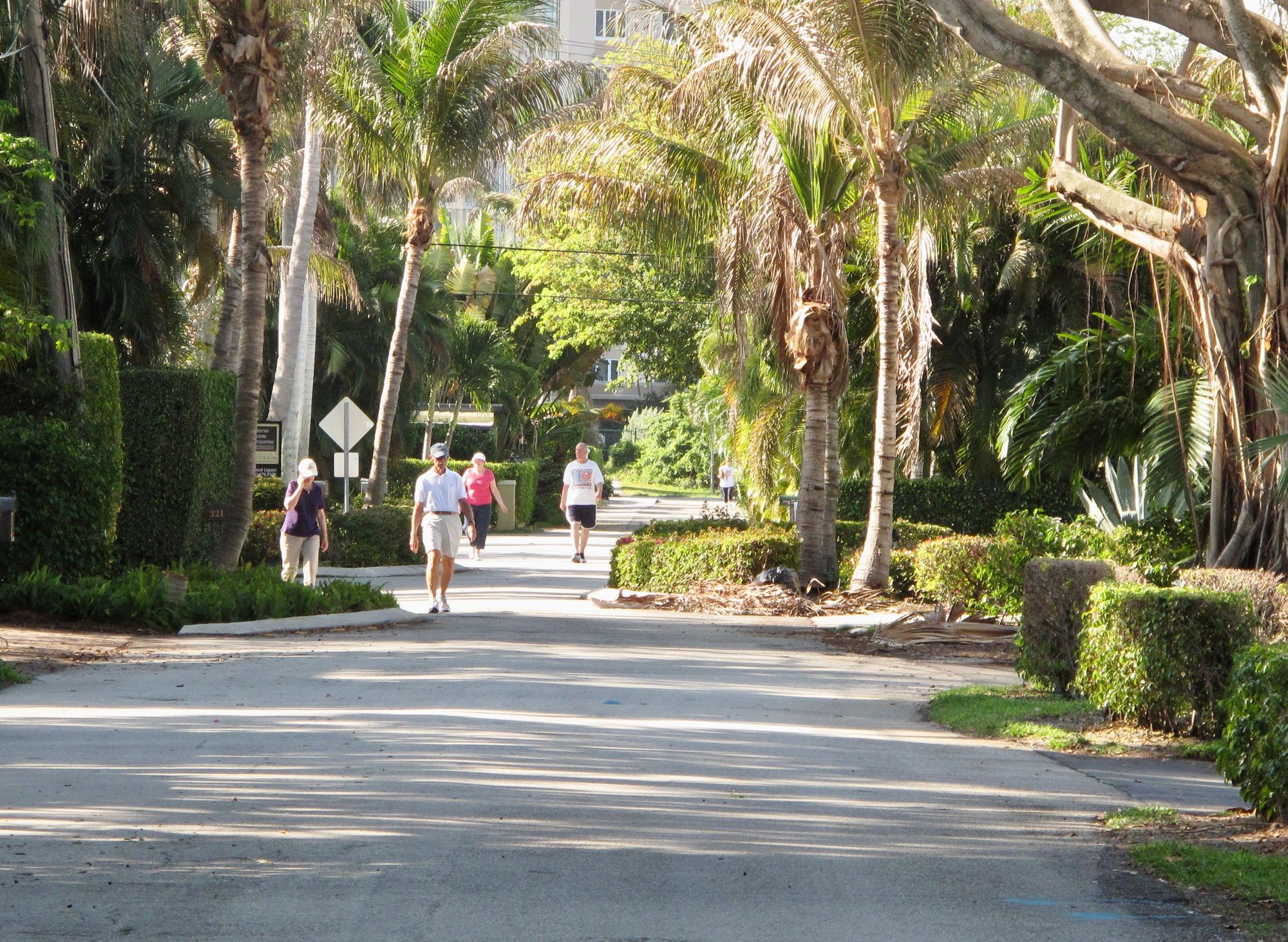
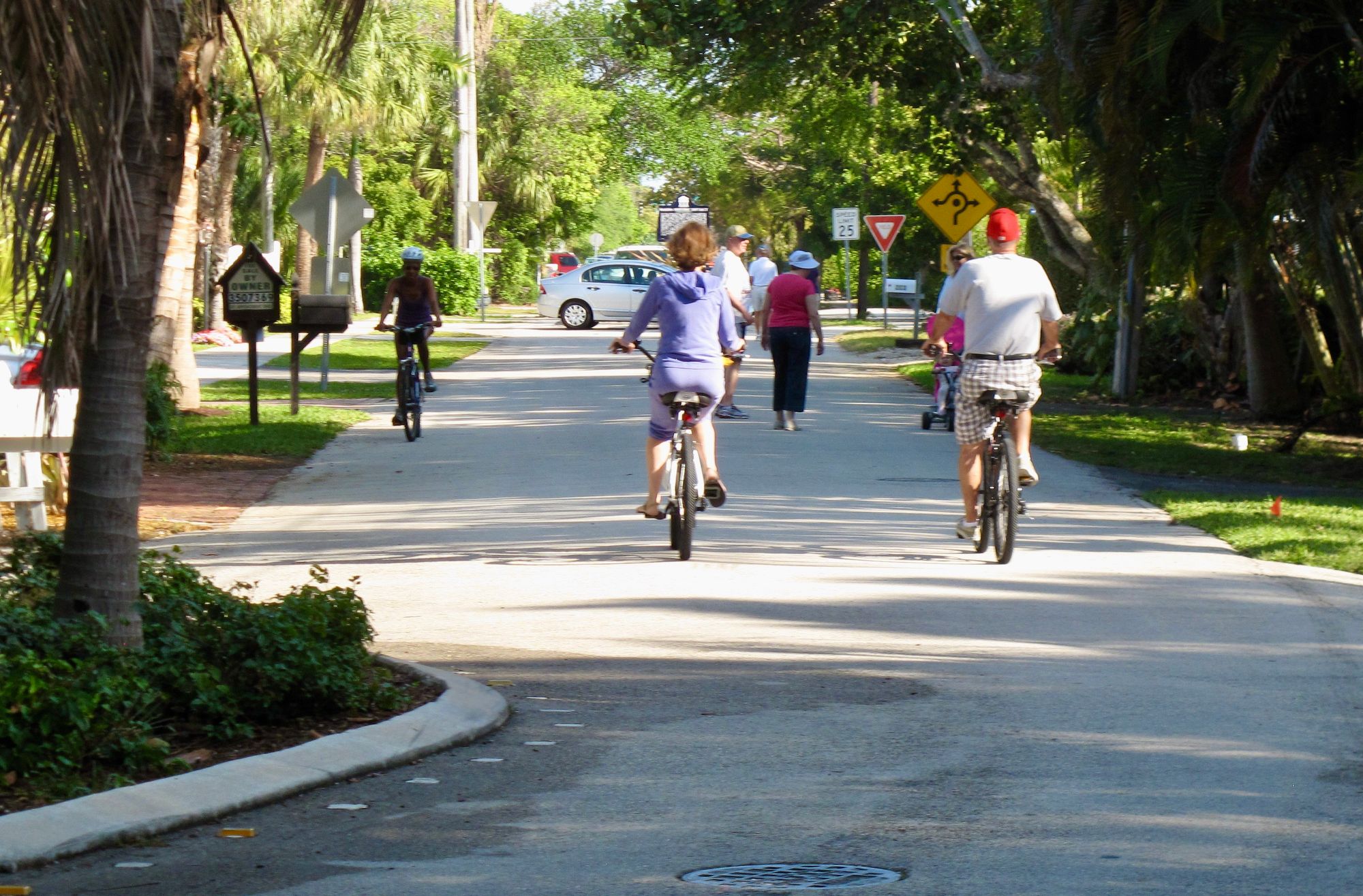
Neighborhood intersections, roundabouts, and local streets
Now that we are trying to understand what the future of Delray could be, we drive through various neighborhoods where we see all kinds of people that clearly love and care for their home. There is a strong village feel to most of these places.
These special neighborhoods start at the intersections, which act as gateways into them from the main streets. As one eases into each neighborhood street they immediately understand that speeds here are low and because of that, they are comfortable and safe to walk along. Some yards have swings, ornaments and seating that invite people to look more closely. In many places, people are strolling with their pets. There is a feeling of relaxation and respect for the neighborhood.
One can imagine that, if they lived here, they would enjoy a strong sense of community. This seems even more true in some of the lower income neighborhoods where people spend more time in front of their houses, hanging out with their neighbors, laughing and chatting. We like those areas the most.
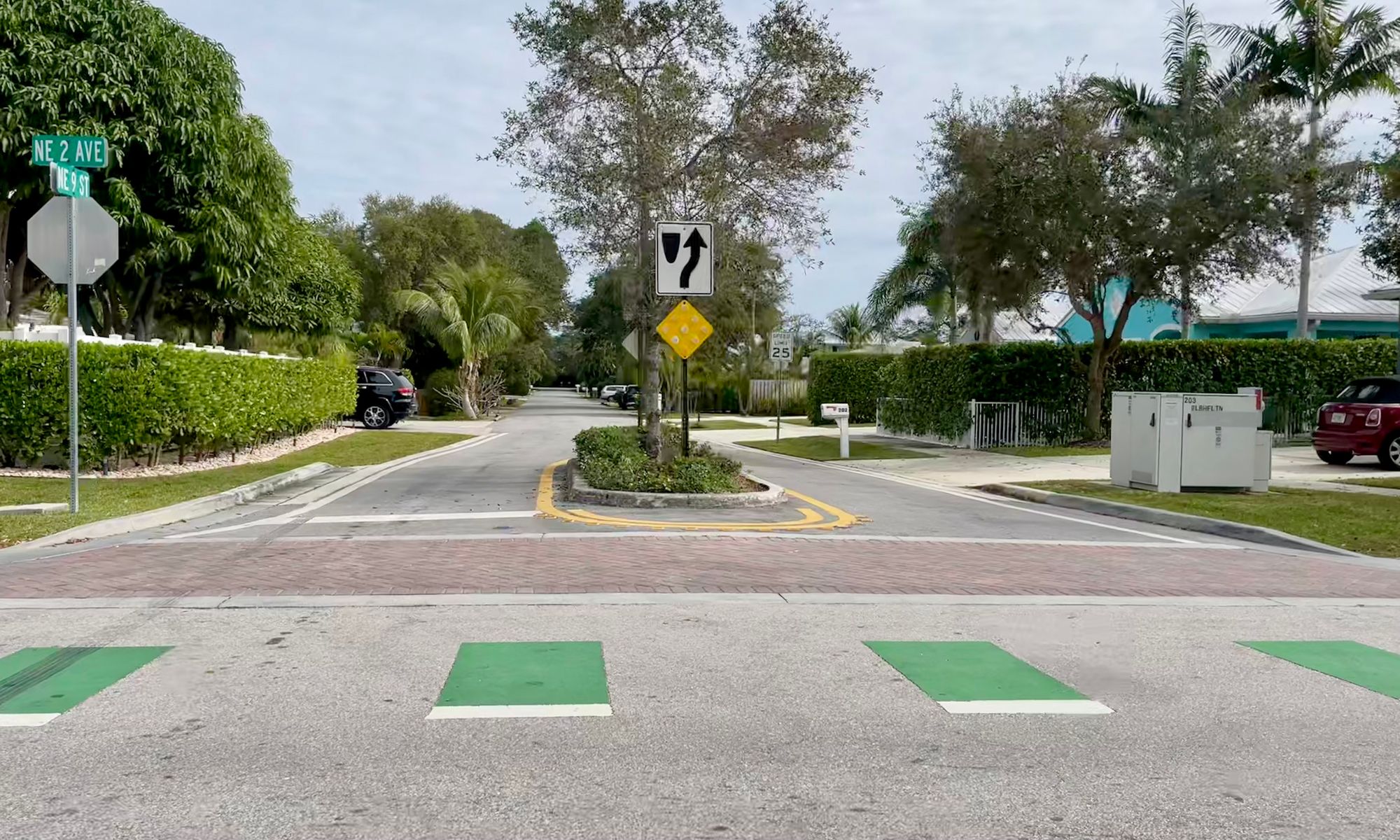
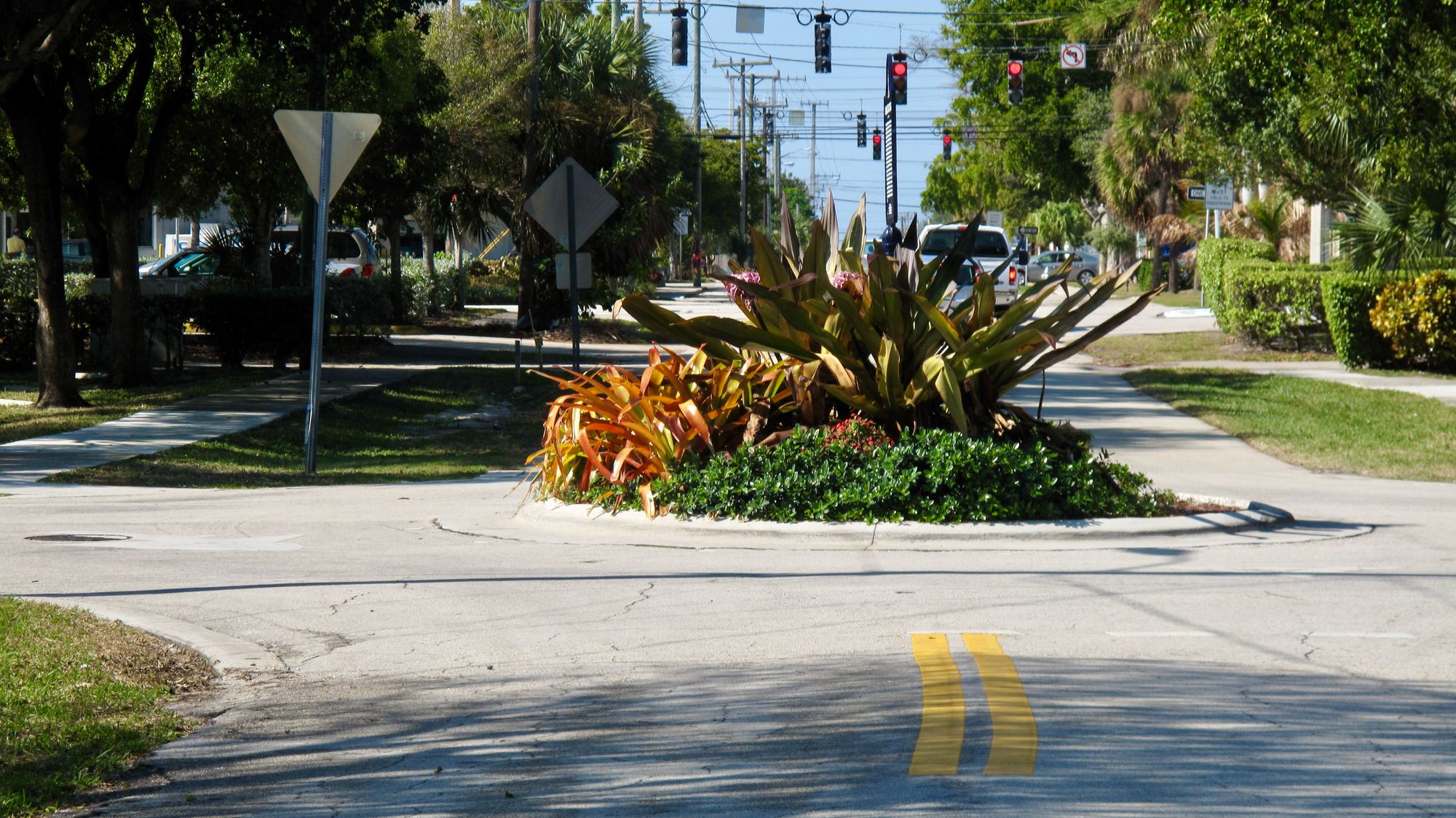
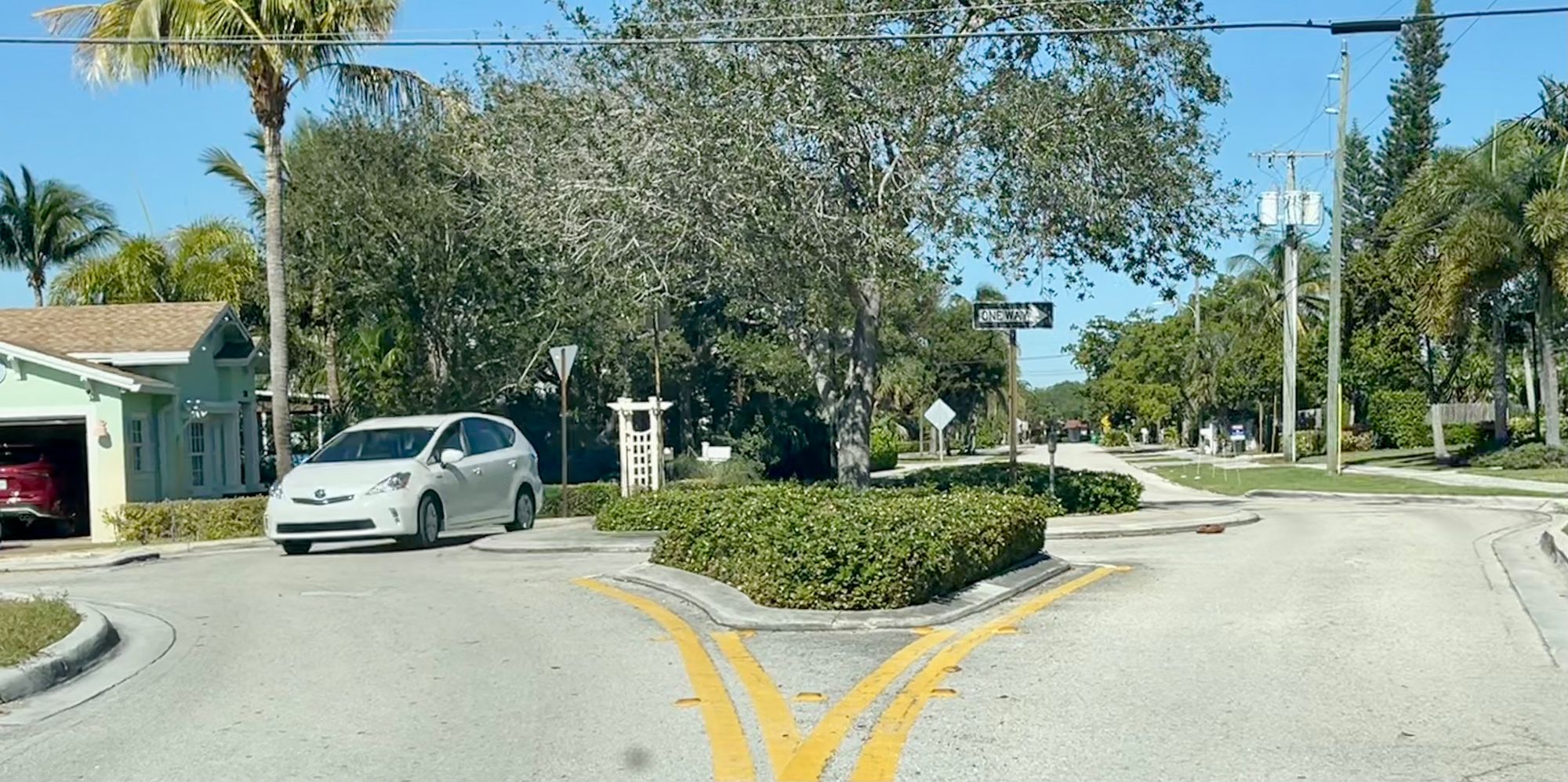
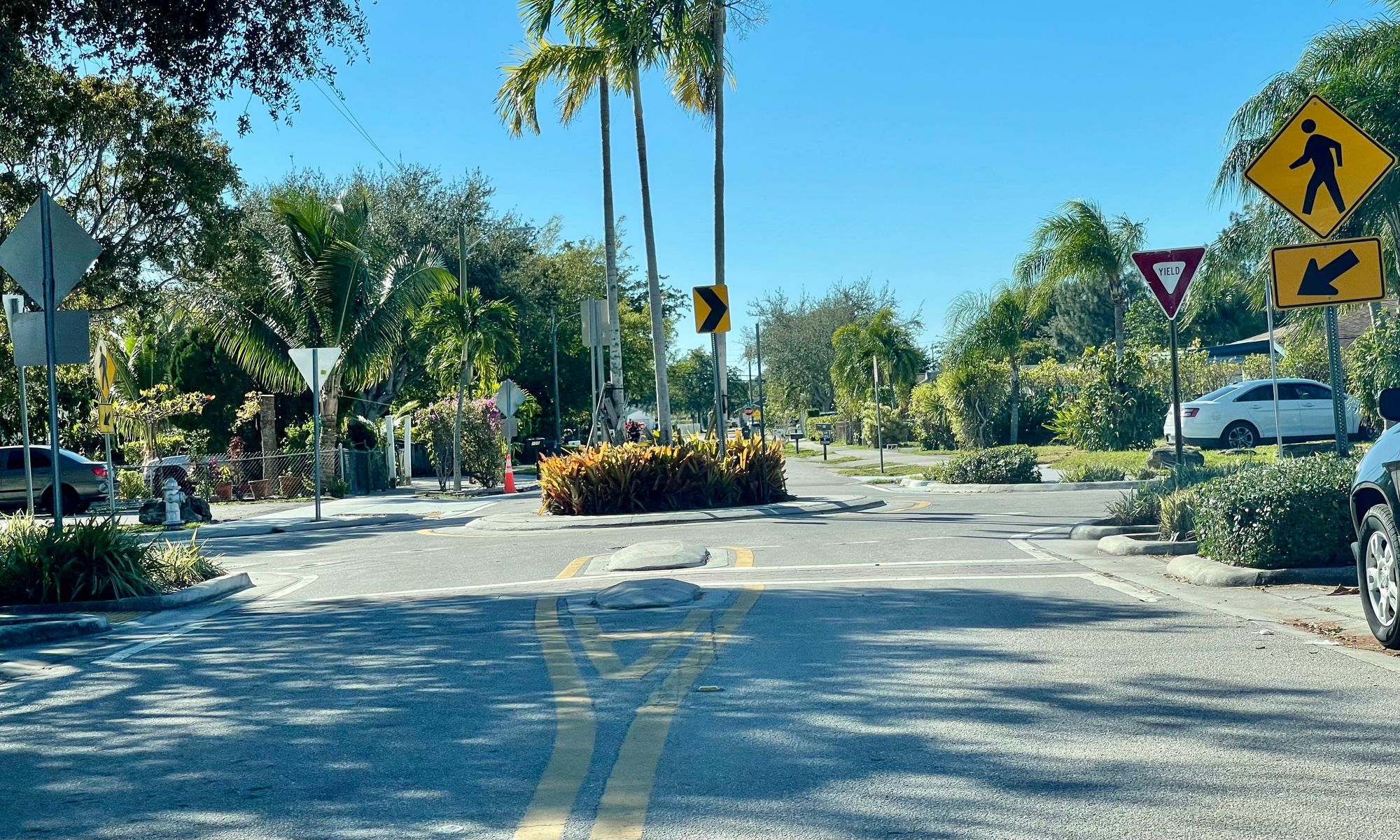
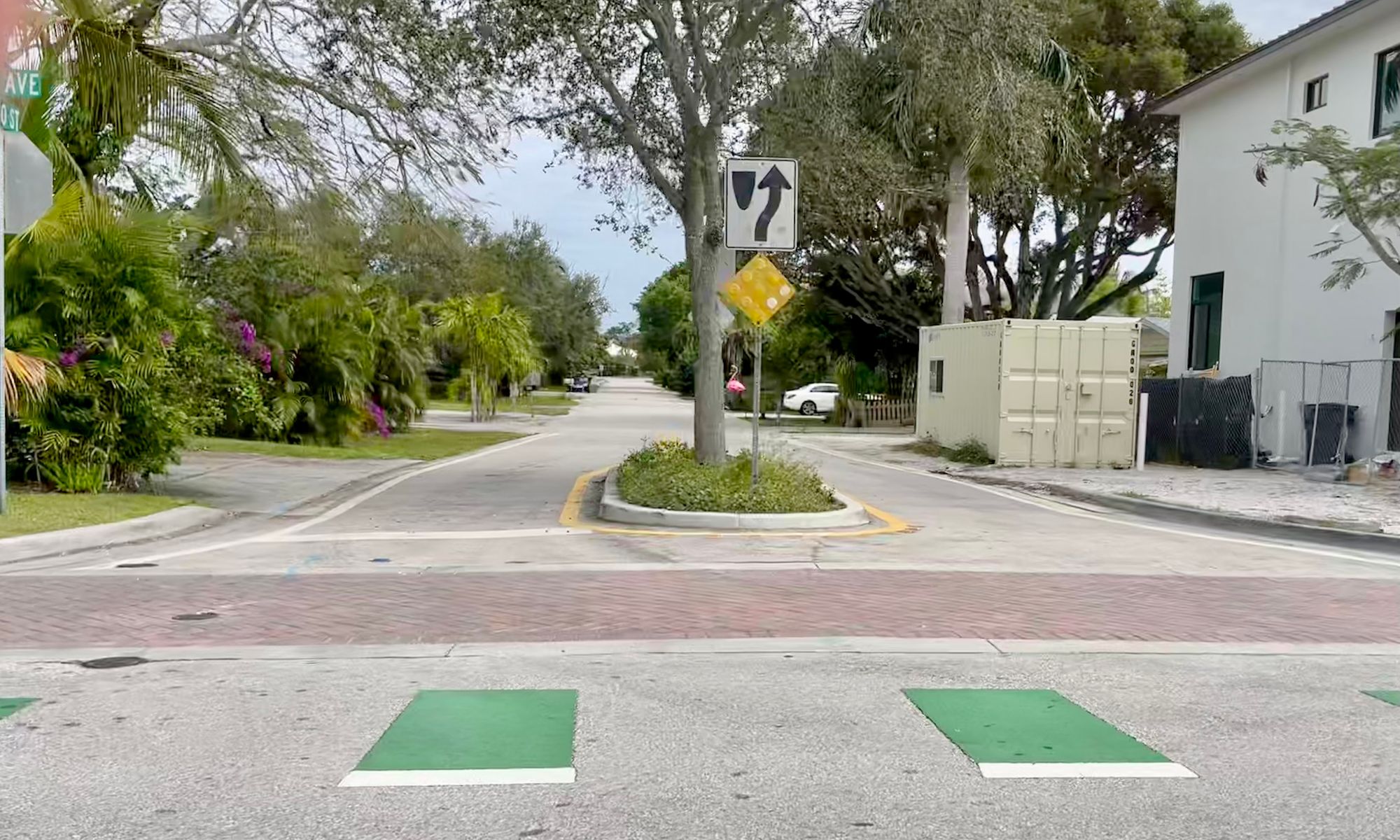
Beautiful North/South Roads in Delray Beach
Pineapple Grove NE 2nd section
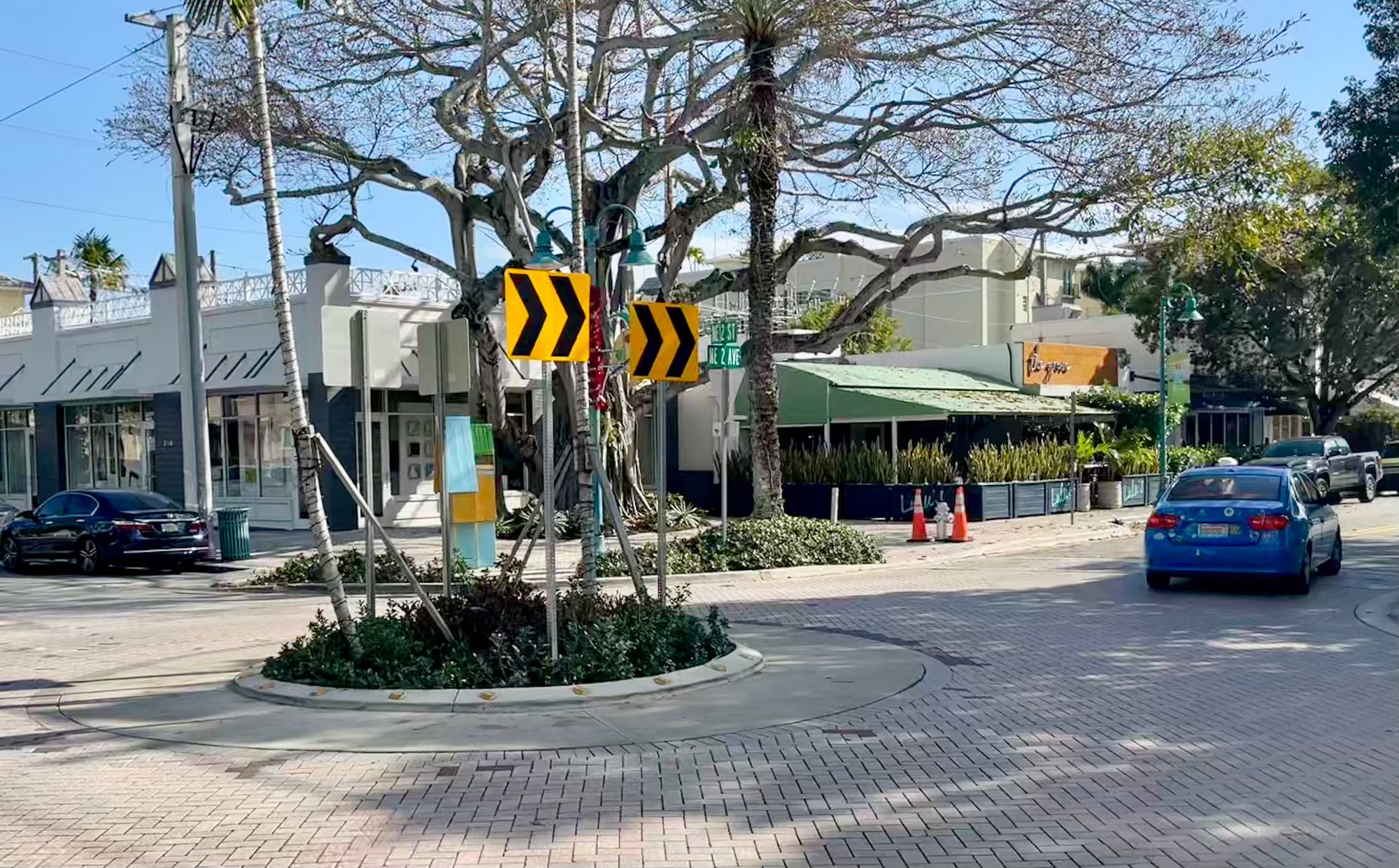
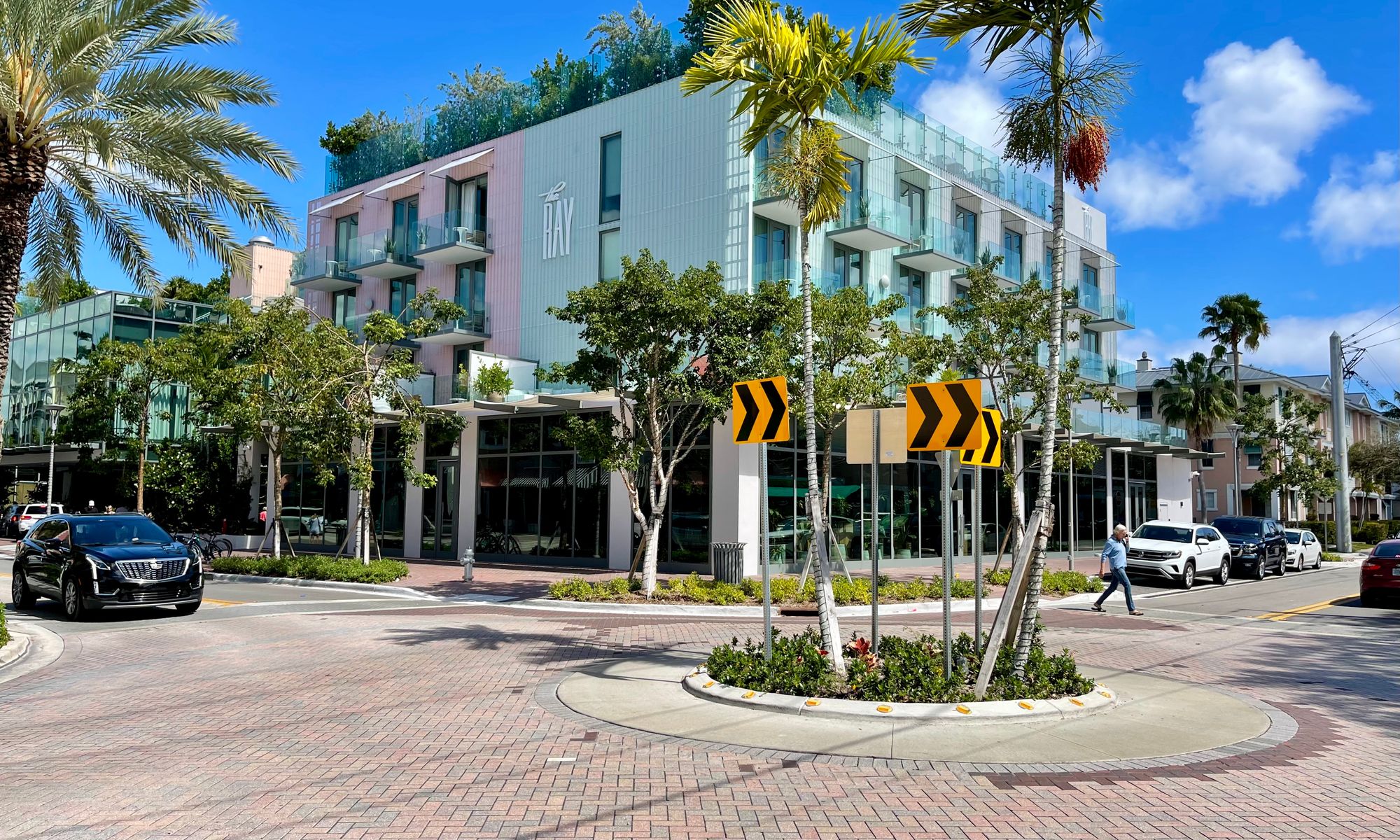
NE Second which becomes Seacrest going north
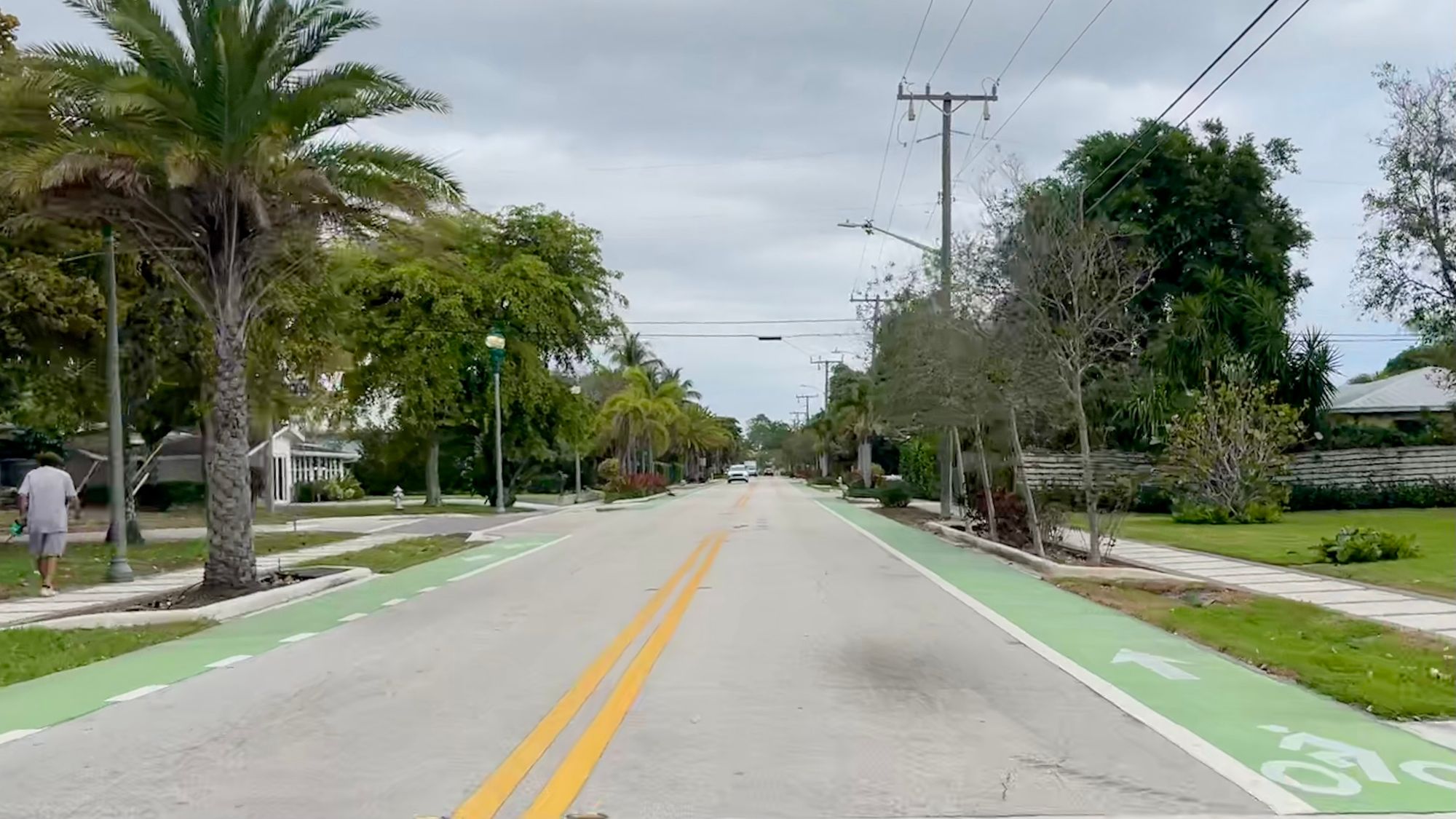
Swinton Avenue, north and south of Atlantic intersection
This intersection has sidewalks on both sides with bicycles sharing the road. The speed limit is 25 mph. There is no conflict between bikes and cars. One feels like driving slow and enjoying the experience.
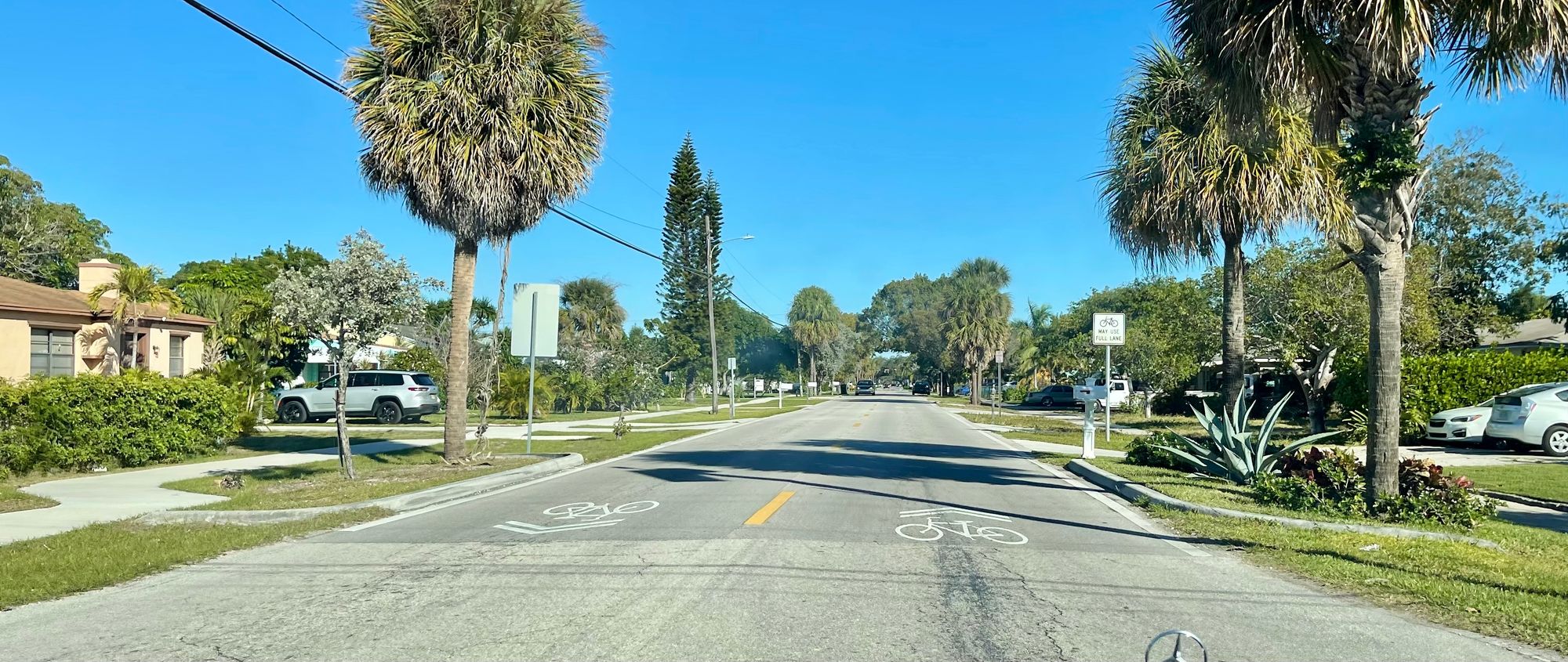
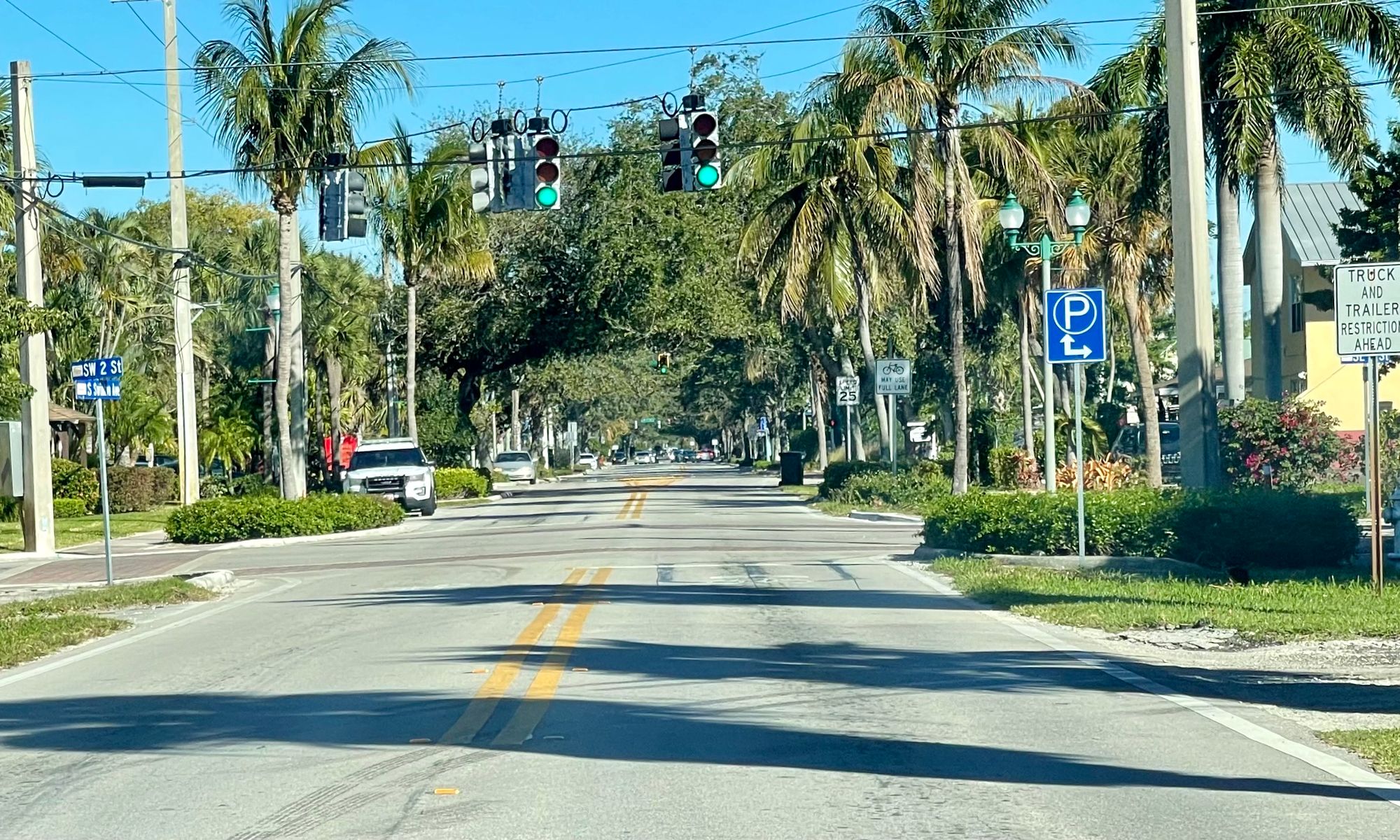
Unfortunately, these kinds of peaceful and enjoyable shared streets are not the only kind to be found in Delray...
Delray Beach is also a case study on the impact of "Killer Intersections"
We call "killer intersections" those intersections that are not only dangerous for pedestrians and cyclists but that also kill all social and commercial life around them because they are so dominated by cars. These intersections are hostile and unpleasant to be in, driving people away from them. The opposite of a "killer intersection" is shared space, where everyone feels welcome and community life thrives.
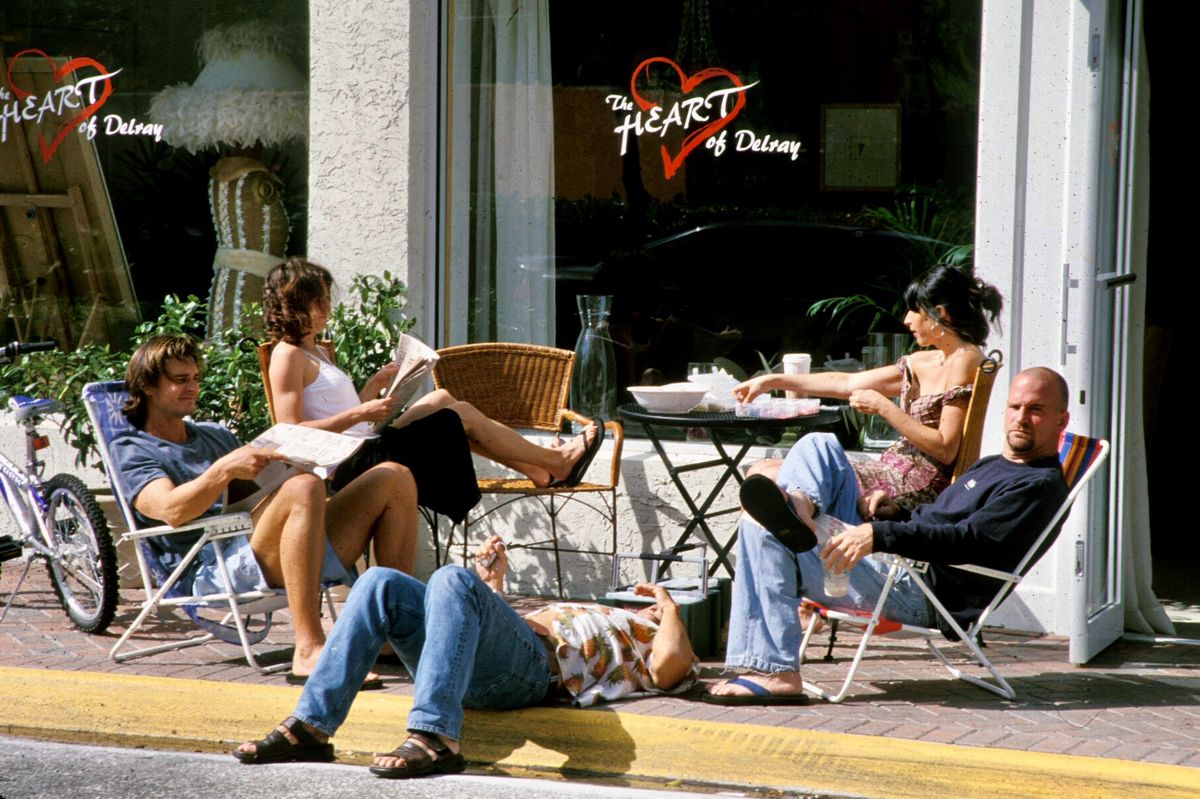
Car culture has defined much of our recent past but it shouldn't define our future. It has enormous negative consequences on all aspects of life including social and community bonds and economic prosperity. Instead of further adapting to the car, we believe that we can go "back to the future" to create the once prevalent village-like feeling that supports healthy and happy living. In this way, we can grow, but with a vision for the future that aligns with what we hold dear.
A Major "Killer Intersection"
One of the worst intersections in the state is at I-95, Federal and Linton, spreading out to the West and east to A1A. It has the worst sidewalks and its hostile intersection are what most people first experience as they enter Delray Beach. It should be an embarrassment for a city to have such a street be people's first big impression of it.
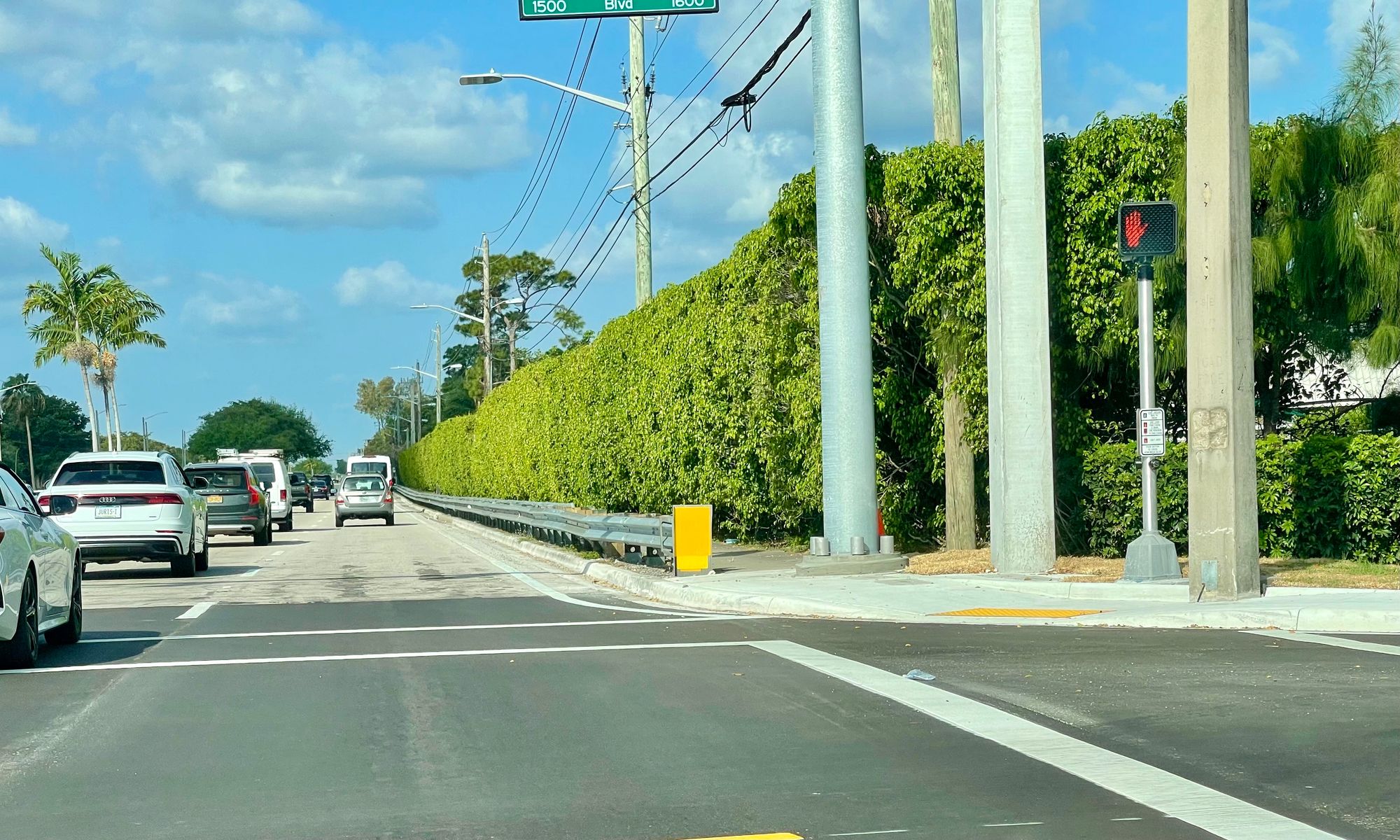
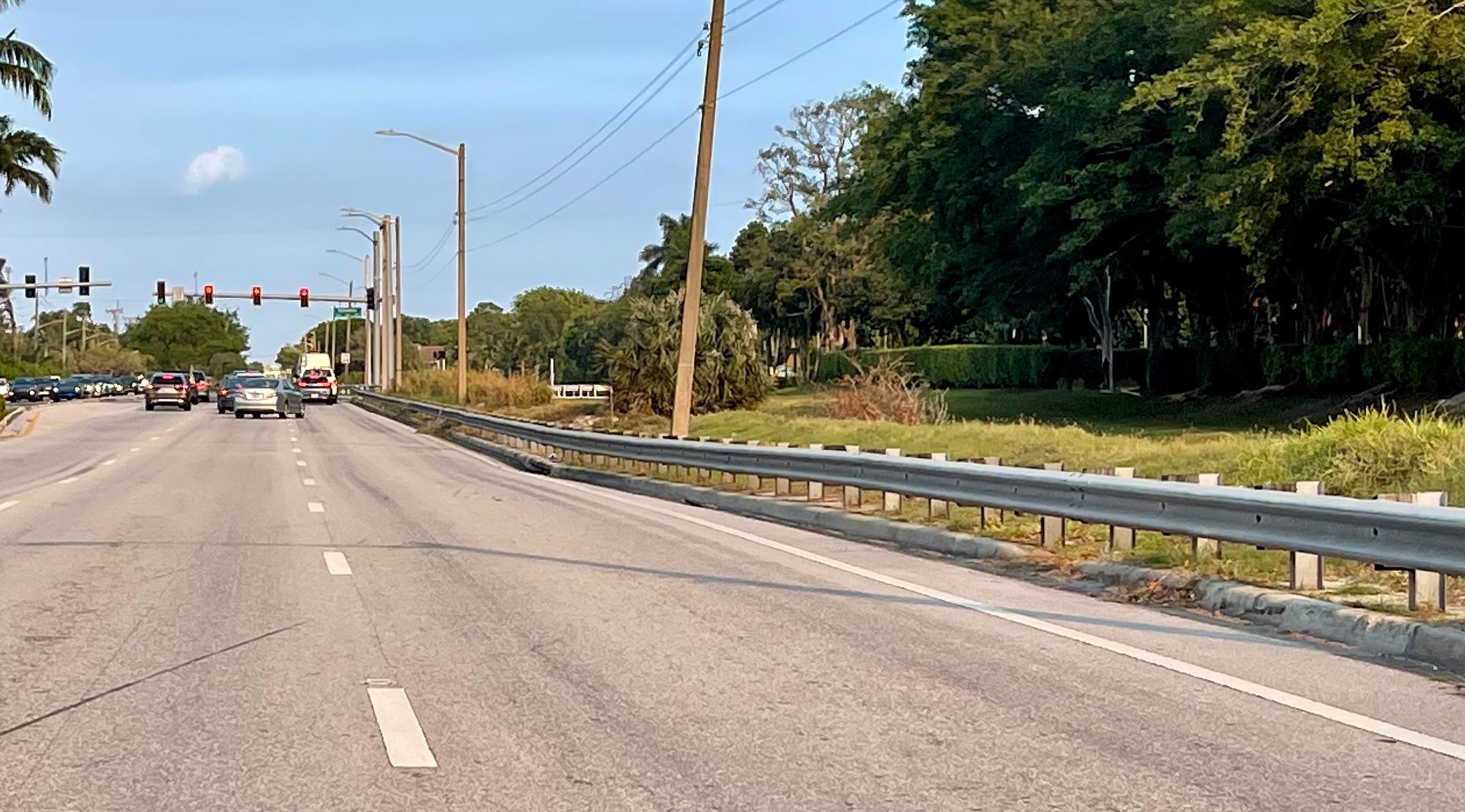
Left going west and right going east. Few people dare to walk or bike. We often see mothers with their children carrying groceries trying to walk on too narrow...or no sidewalks. It is tragic.
Linton From l-95 to Federal Intersection
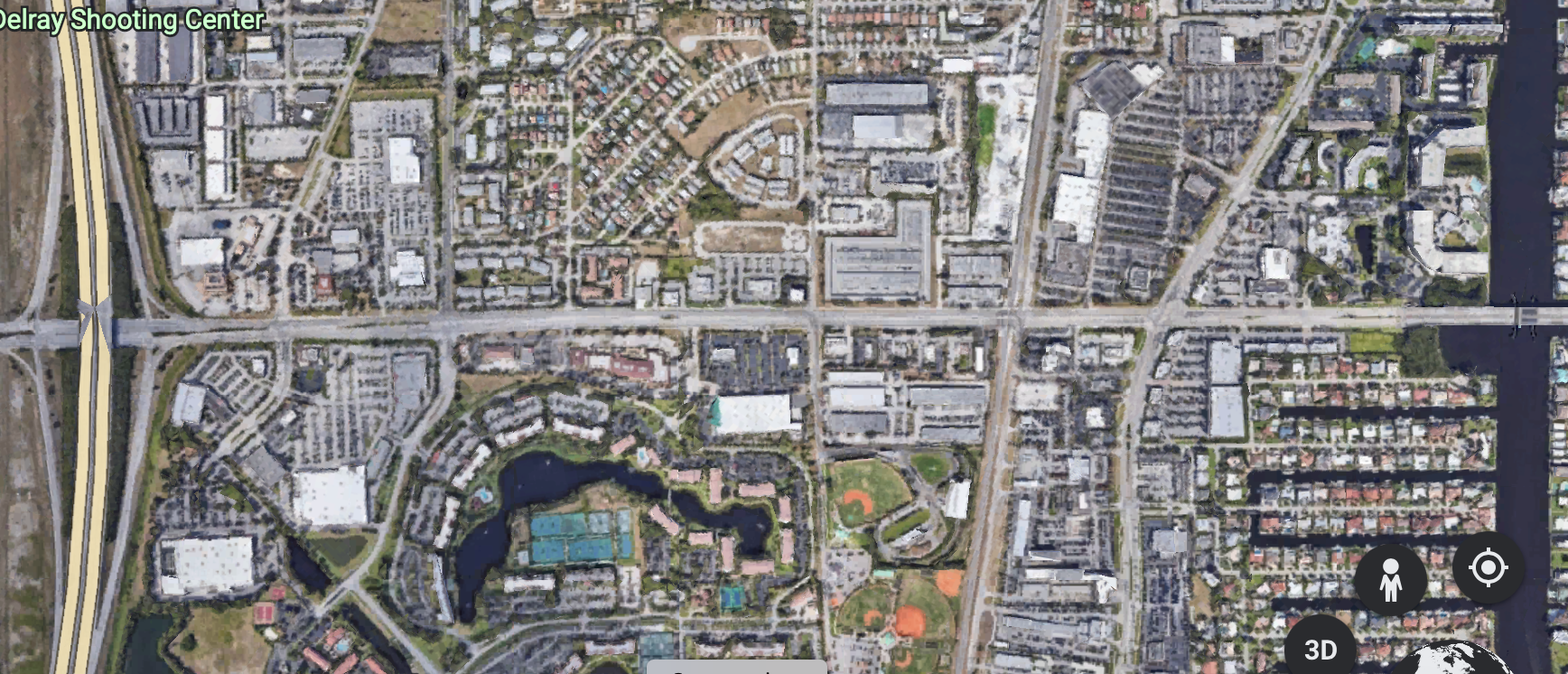
A Killer Intersection at Linton and Federal in Delray Beach
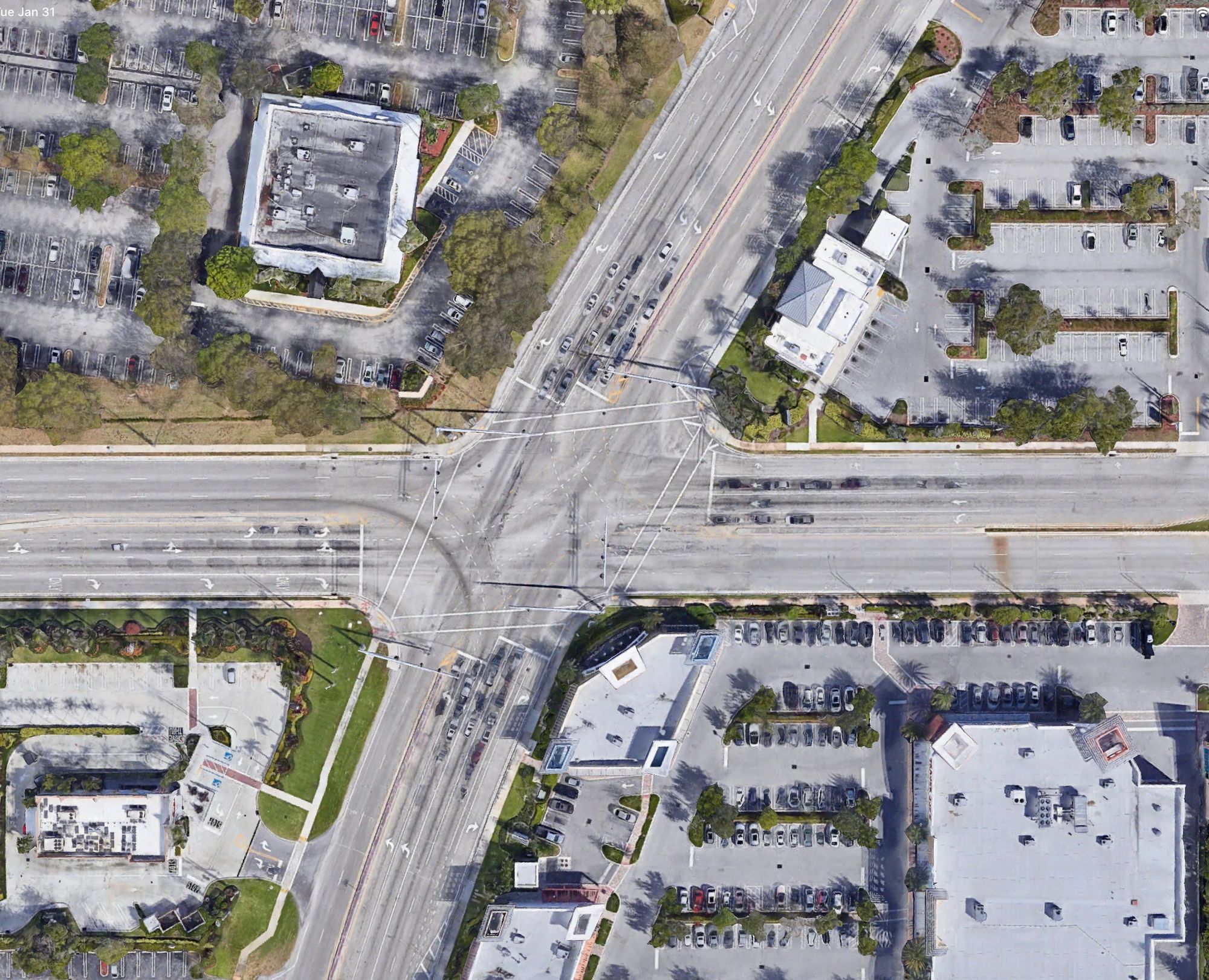
Crossing Linton and Federal is a major safety issue
This intersection is too big and therefore dangerous for anyone trying to navigate it outside the protection of a metal box. In NO WAY should a mother with two babies have to run for her life to get across a 120 foot intersection. There is nothing human-friendly about this. Therefore, it doesn't belong within the boundaries of any city where humans are out and about. There is a reason why intersections of this sort are where a third of pedestrian fatalities happen.
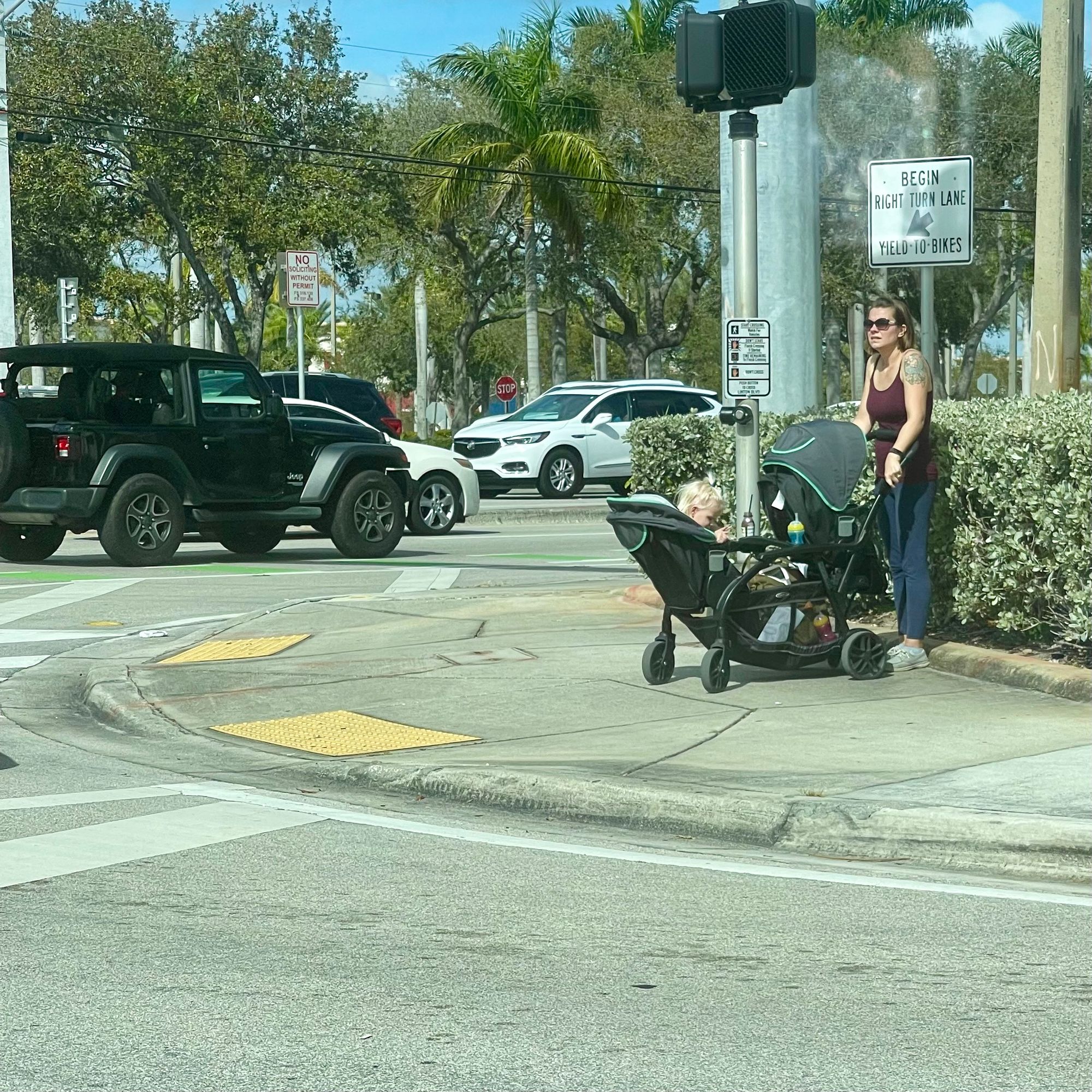
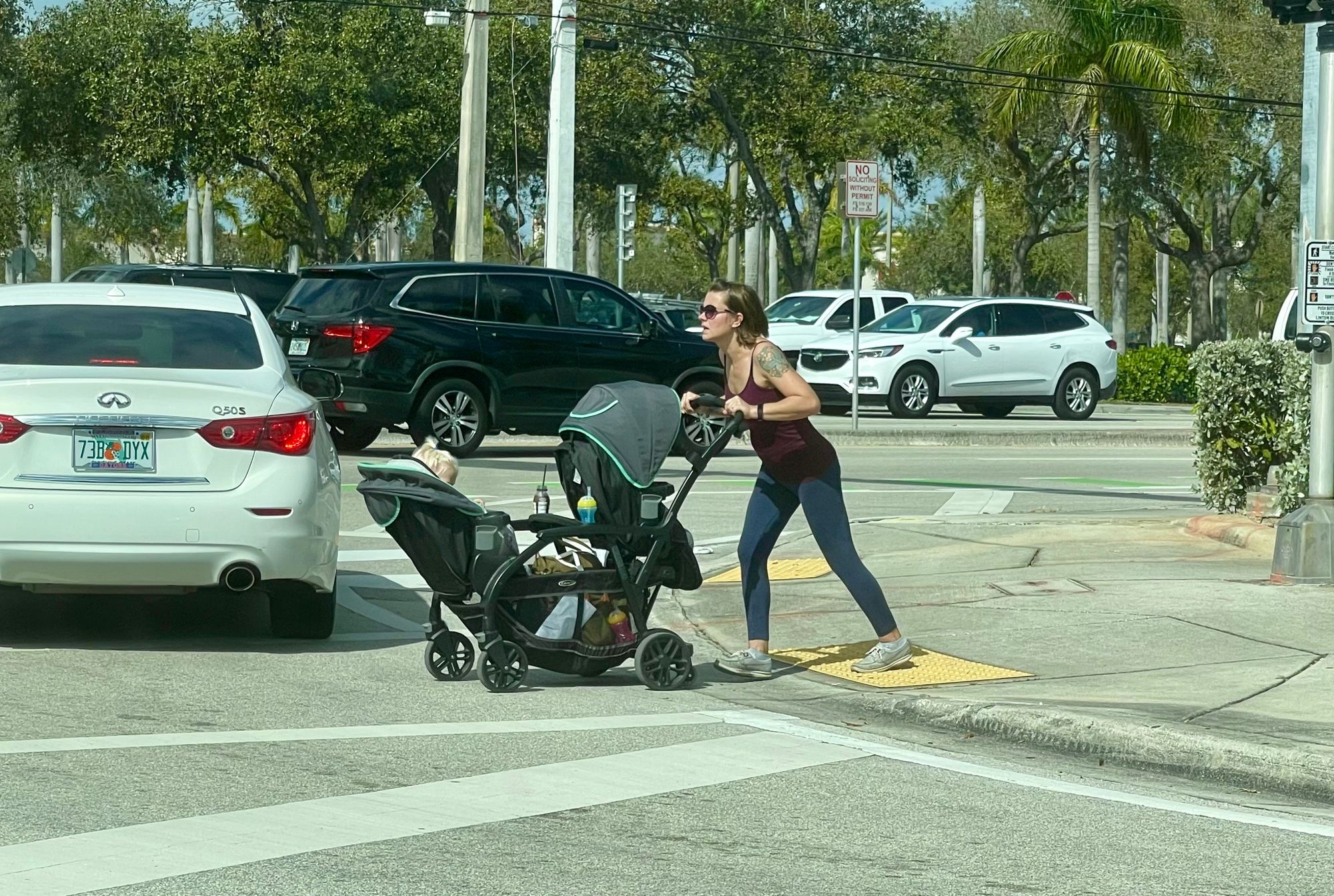
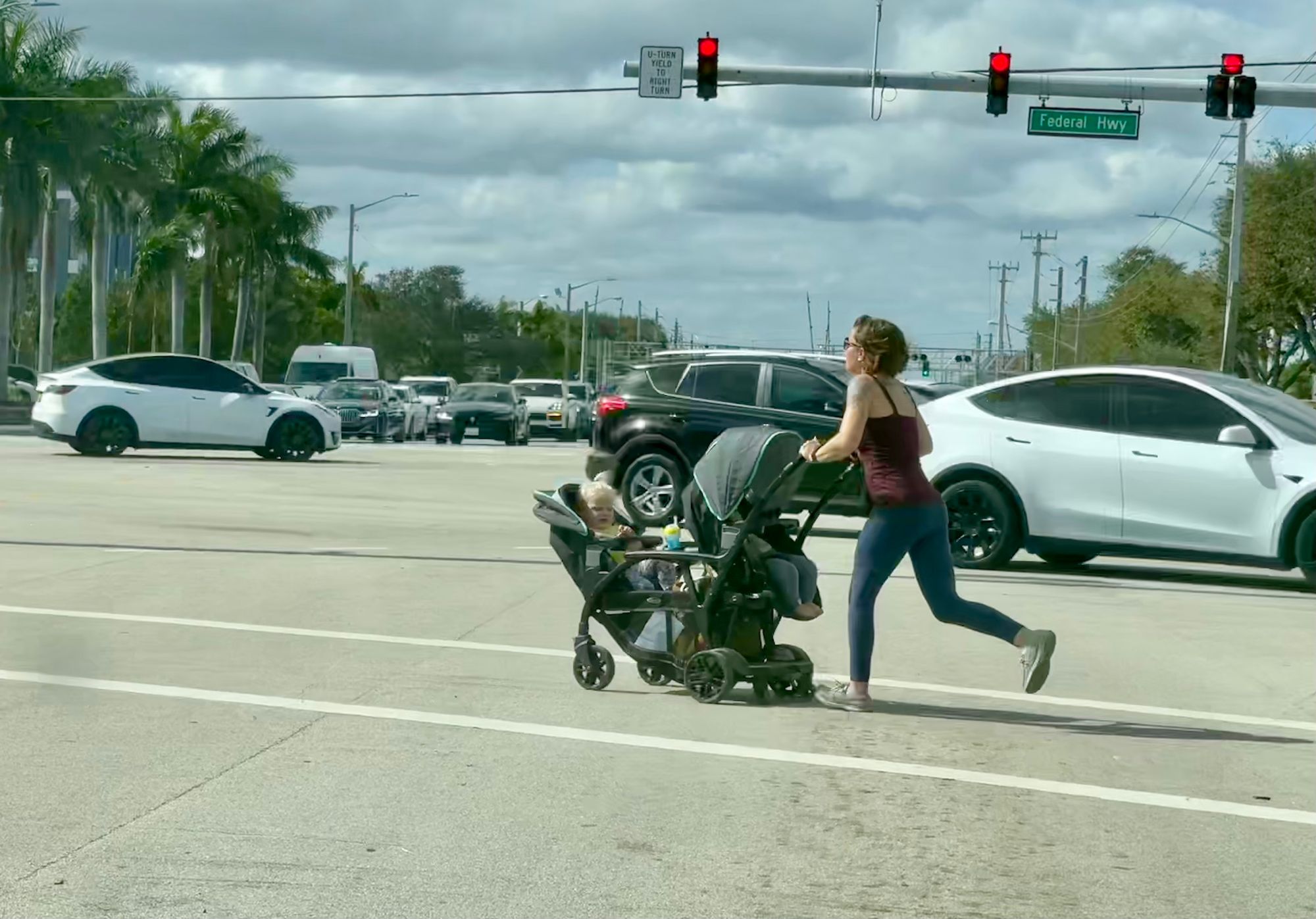
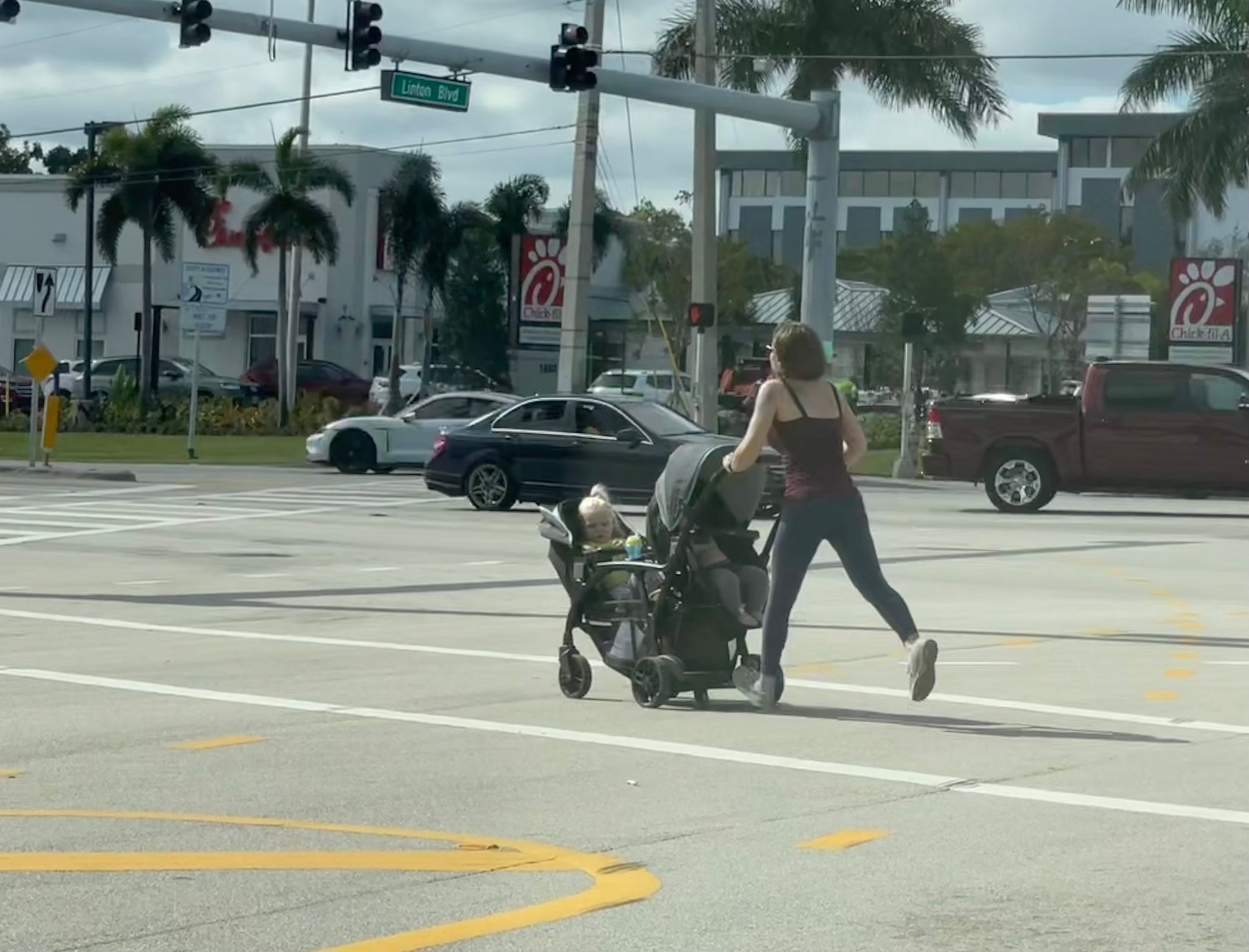
One outcome of traffic engineers "improving this intersection" is that more traffic is brought into the downtown along Federal. Restricting that traffic could mean less throughput which could help Federal become more lively and thus a better integrated part of the downtown core.
Waiting for the bus near Linton on Federal
There is no reason why a bus patron should have to sit on A ROCK that was there for at least 4 years serving as the only "bench" at this bus stop. It was only recently removed but the fact that it persisted for so long in this state is absurd.
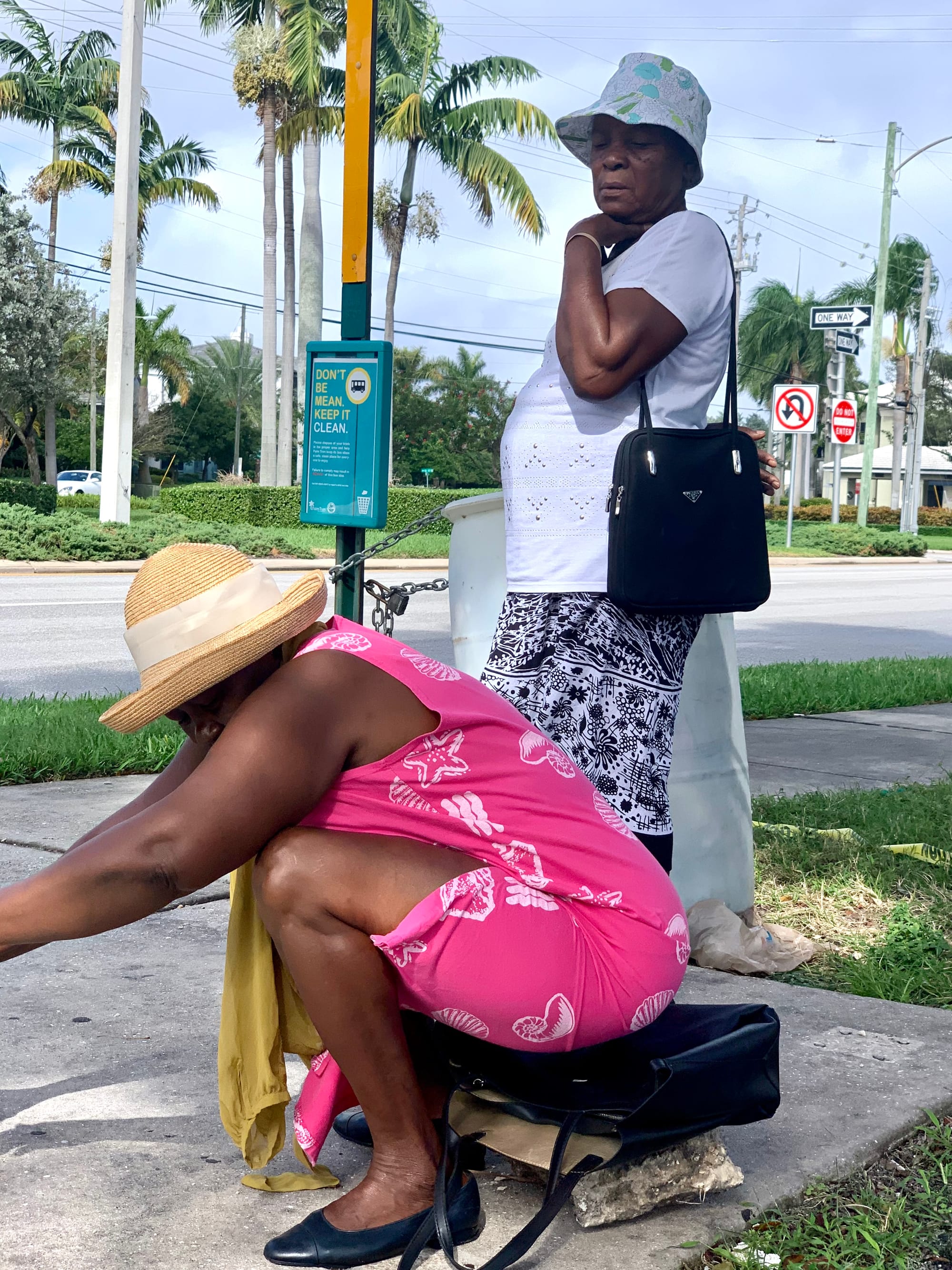
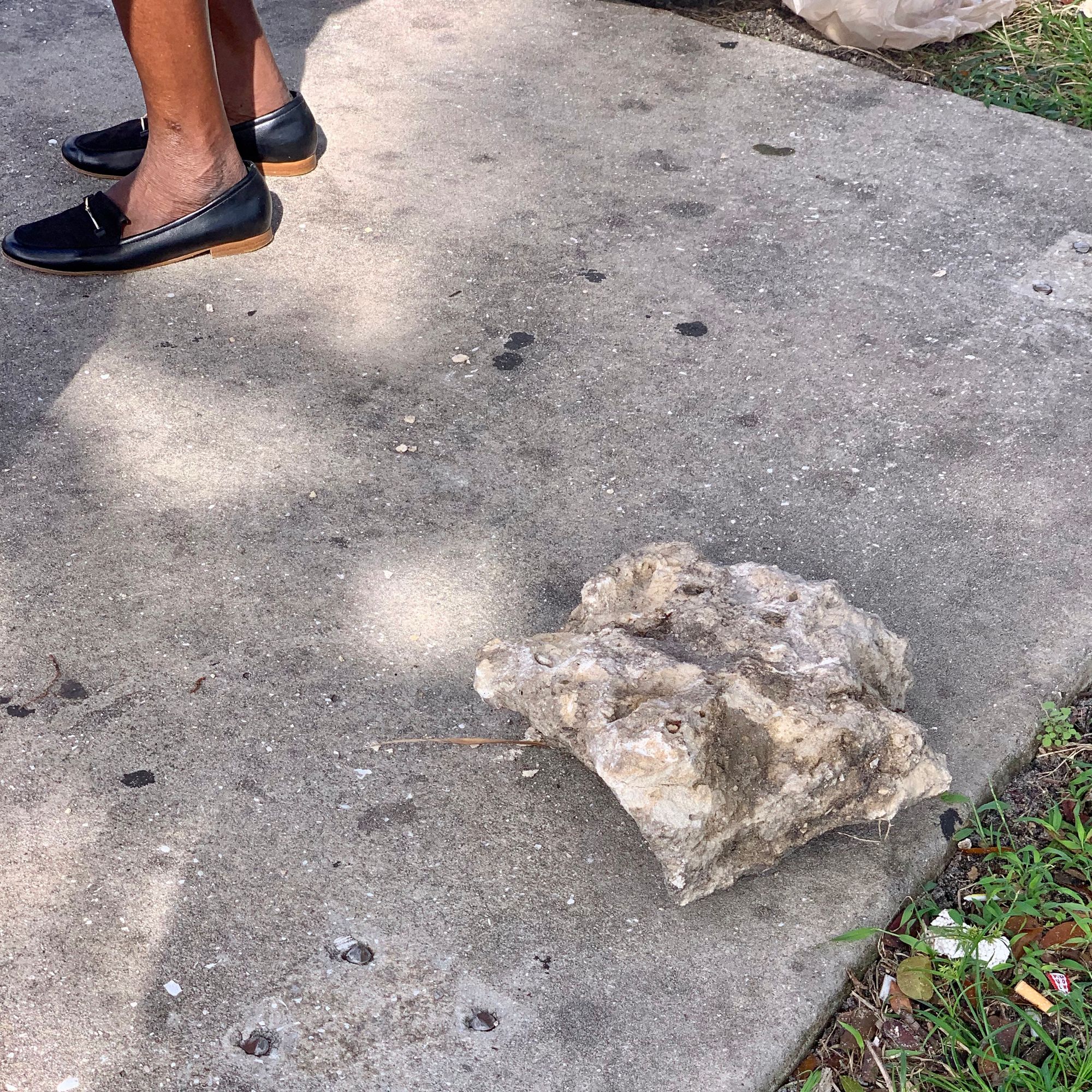
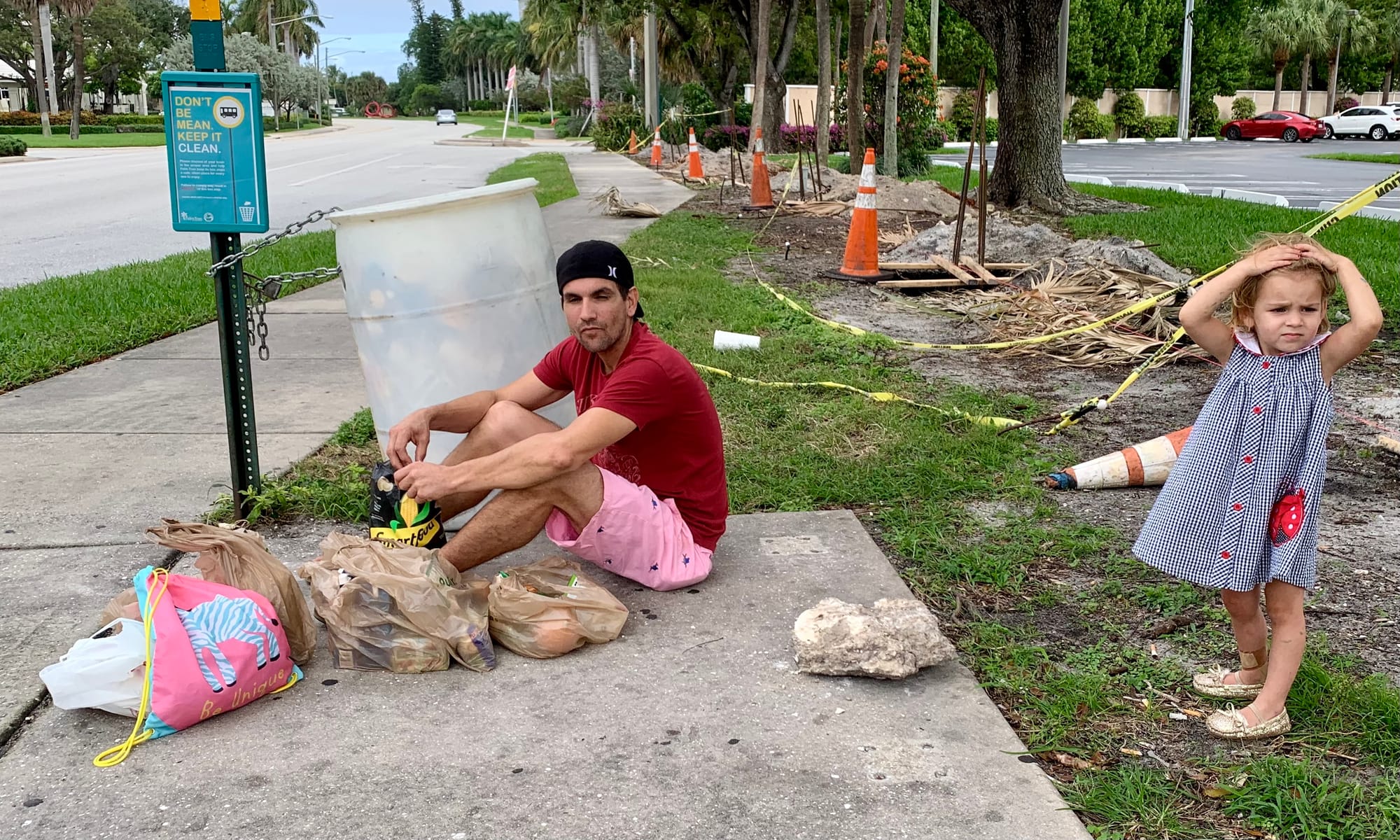
Atlantic Ave and Swinton, A "Killer Intersection" in the Core
An intersection leading into a city or town's core has the very important role of connecting. It needs to connect people to businesses, to important buildings, and to the community. But this intersection that leads to Delray's core acts like a wall between what lies to its east and its west, dividing rather than connecting. Instead of a gateway, it is a barrier.
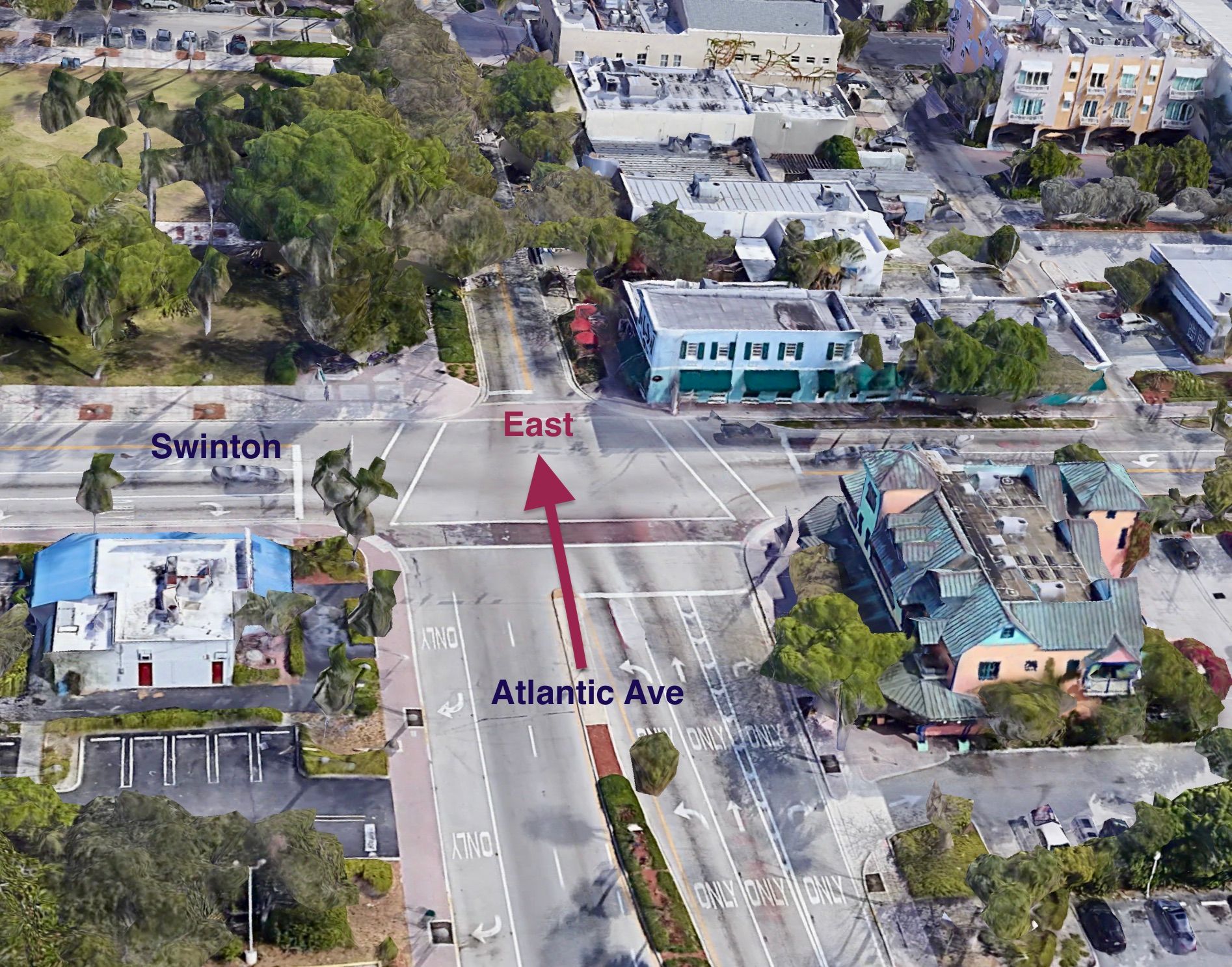
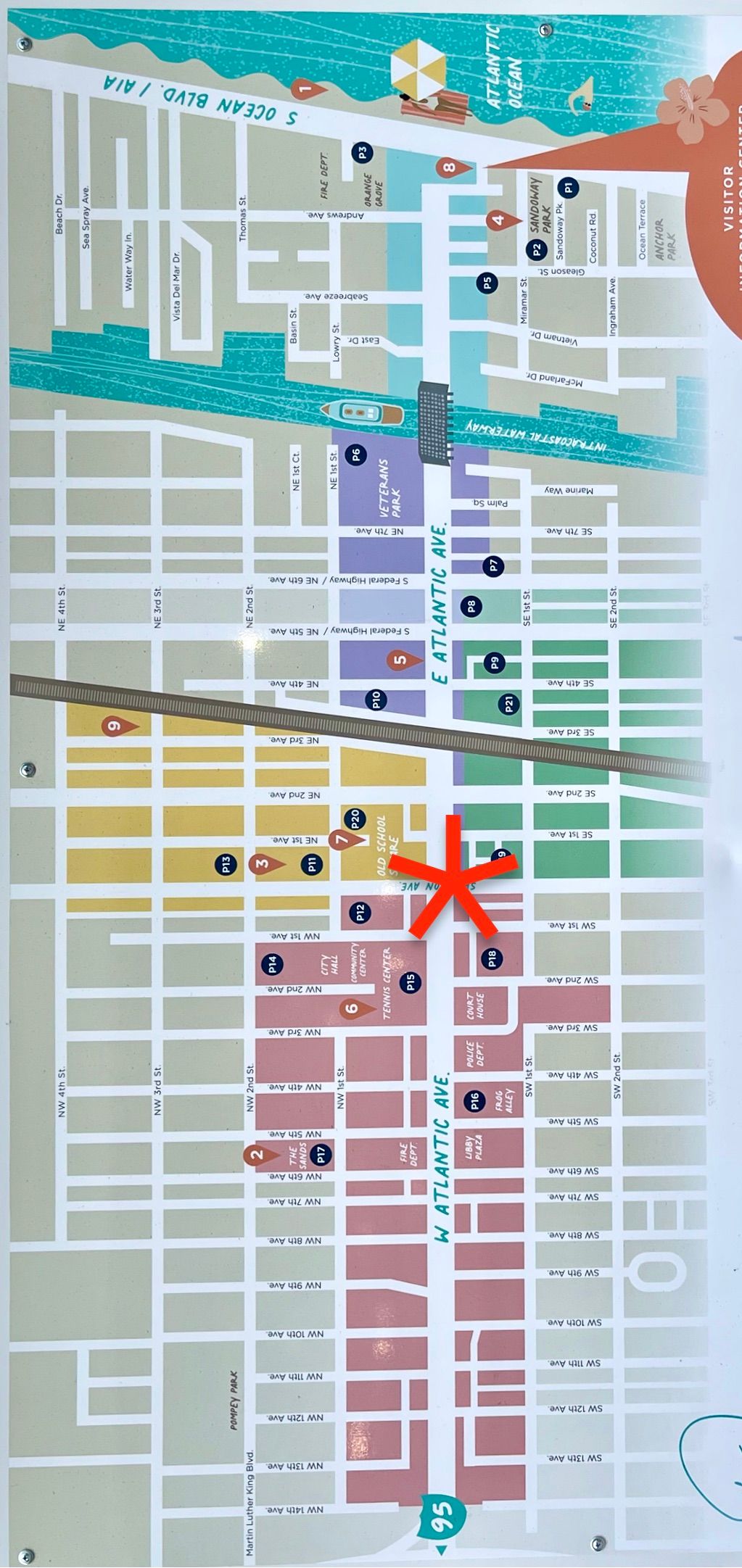
Google image looking east on Atlantic toward the downtown core

The impacts of "killer intersections" like the one on Swinton and Atlantic are not limited to that one intersection. They have ripple effects on the whole town, especially from the above core all the way to A1A and the ocean.
Too wide roads and intersections in the red-circled area, along with bland architecture with no sense of character, create a zone that is significantly under-performing. It gives priority to vehicles and generic buildings in the most valuable properties of town, greatly diminishing its charm and quaint "village" quality that people love.
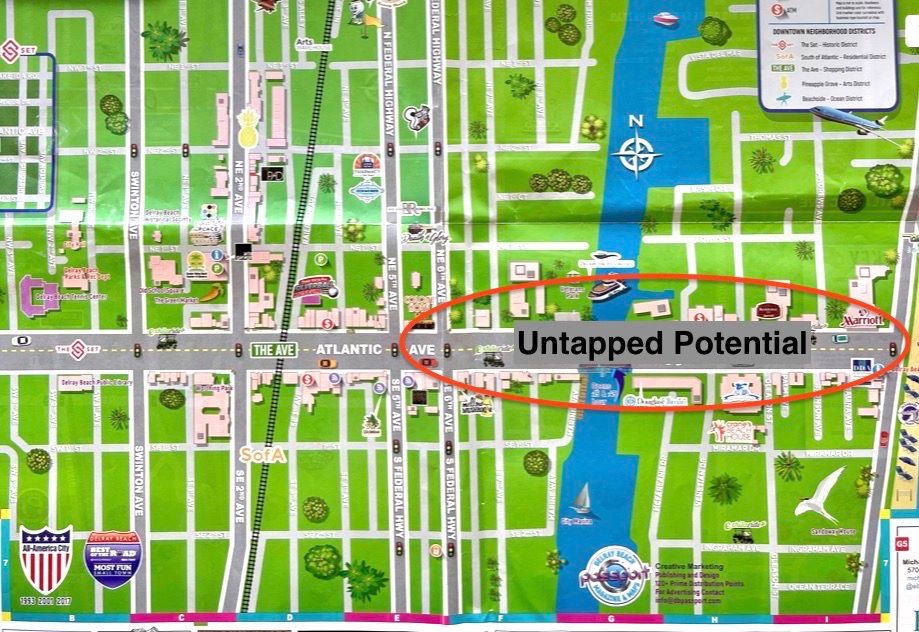
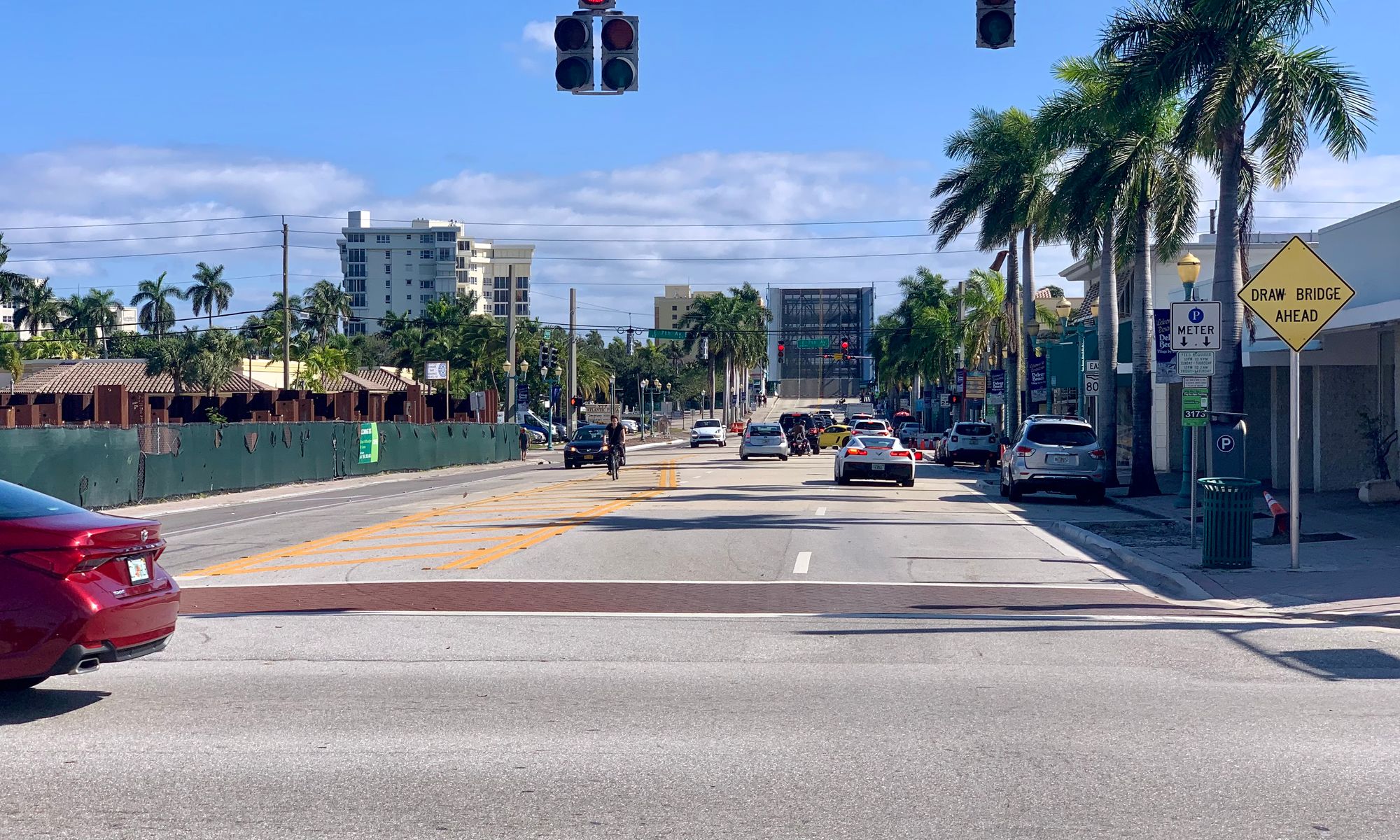
The stretch between Federal and the Intracoastal has some of the worst sidewalks and widest streets (6 lanes) on Atlantic Avenue – a common design cutting through communities all around the US. It is also full of "modern" architecture with design that conforms to heavily traveled streets rather than to human sensibilities, lacking active sidewalks and open, engaging buildings that draw people in.
As in many cities, outside the small main street core, cars are center stage again and people are squeezed out, forced to walk on the street because of how narrow the sidewalks are. This is backwards. The residents of our cities are humans, not cars, and cities should be designed accordingly.
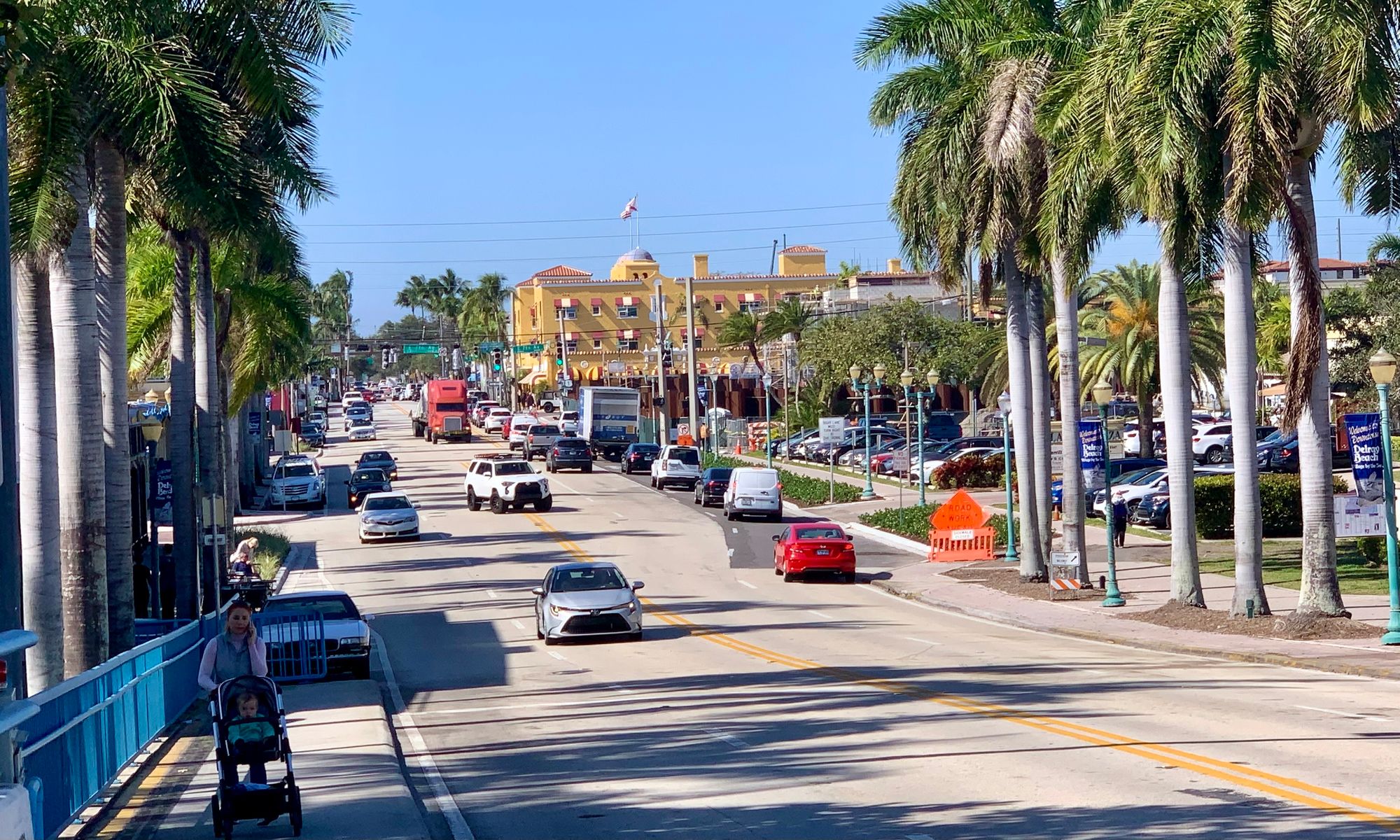
Takeaways
When we look at the streets we love and compare them to the streets where we feel stressed and uncomfortable, a clear takeaway rises to the surface. The street we love are those where people are at the forefront instead of cars. Streets that feel welcoming to pedestrian activity, that have businesses spilling onto wide sidewalks which serve to draw people in, where cars either do not travel or if they do, they do so slowly and carefully – those are the kinds of streets people enjoy spending time on. And those are the kinds of streets where community develops, where businesses thrive, and where people look happiest.
A lot of this has to do with the street design. A street that has two lanes creates a dynamic "shared space" that serves as a gathering place for everyone. When you expand it further, to a three-lane street or wider, the atmosphere changes, and almost none of the social or economic activity that makes a place come alive can occur. Four lanes or more with added parking creates an even stronger barrier to connecting; there is too much separation between the sidewalks and too much stress and chaos caused by the cars.
We need to stop designing for cars speeding through a place and start designing for people lingering in and trying to enjoy the place. In order to create thriving and enjoyable cities, we need to take back space from cars and give it to people and businesses, and we need to activate public spaces to be more interesting and vibrant.


